62 Coleoptera – Polyphaga II
Cleridae
Cleridae, the checkered beetles, have a characteristic colour pattern and are fairly hairy beetles, although there is some variation within the family. Both adults and larvae are very important predators of bark beetles. Adults have a narrow prothorax. Each elytra forms a sharp angle just behind the pronotum, giving the beetle the appearance of wearing “shoulder pads”.
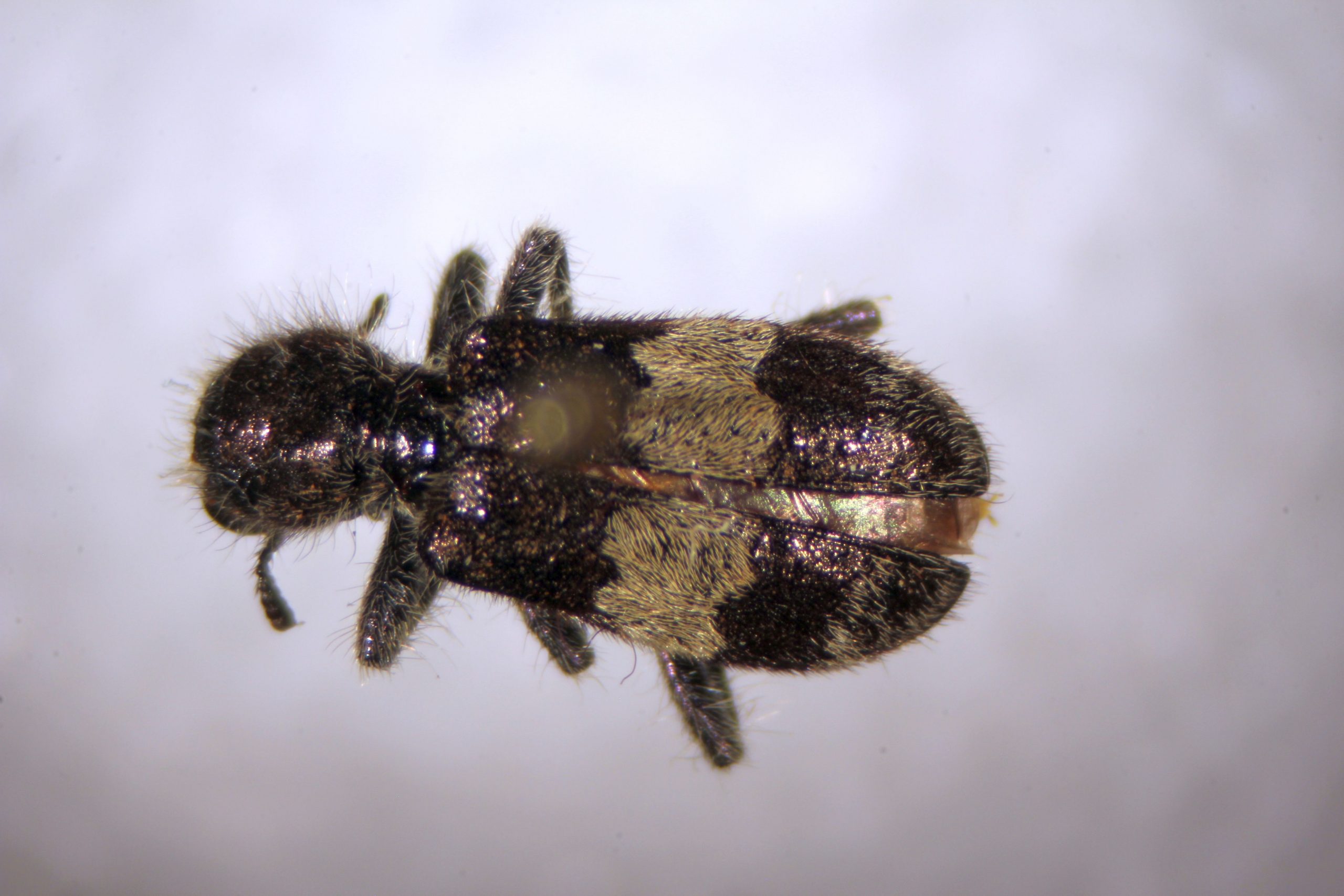
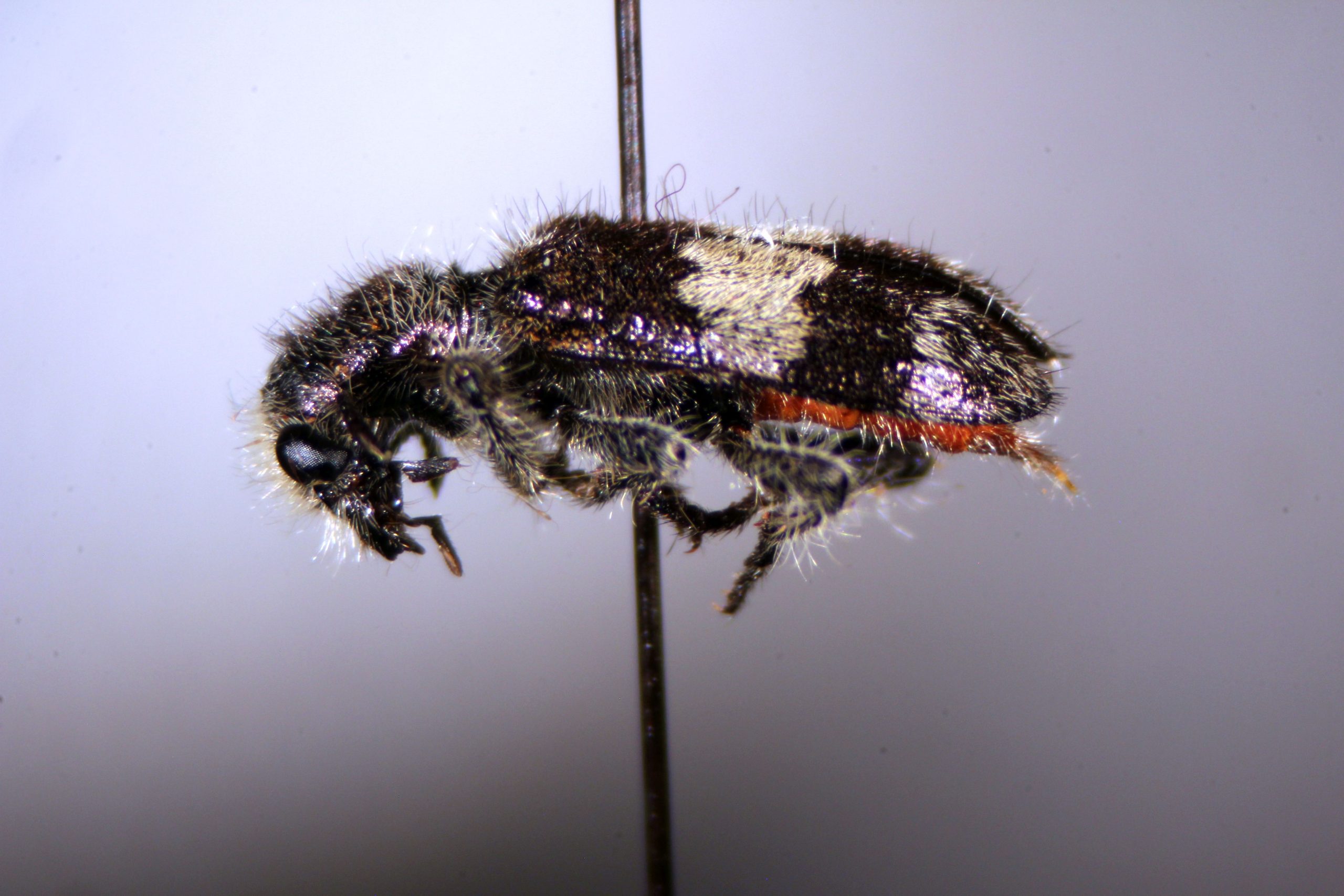
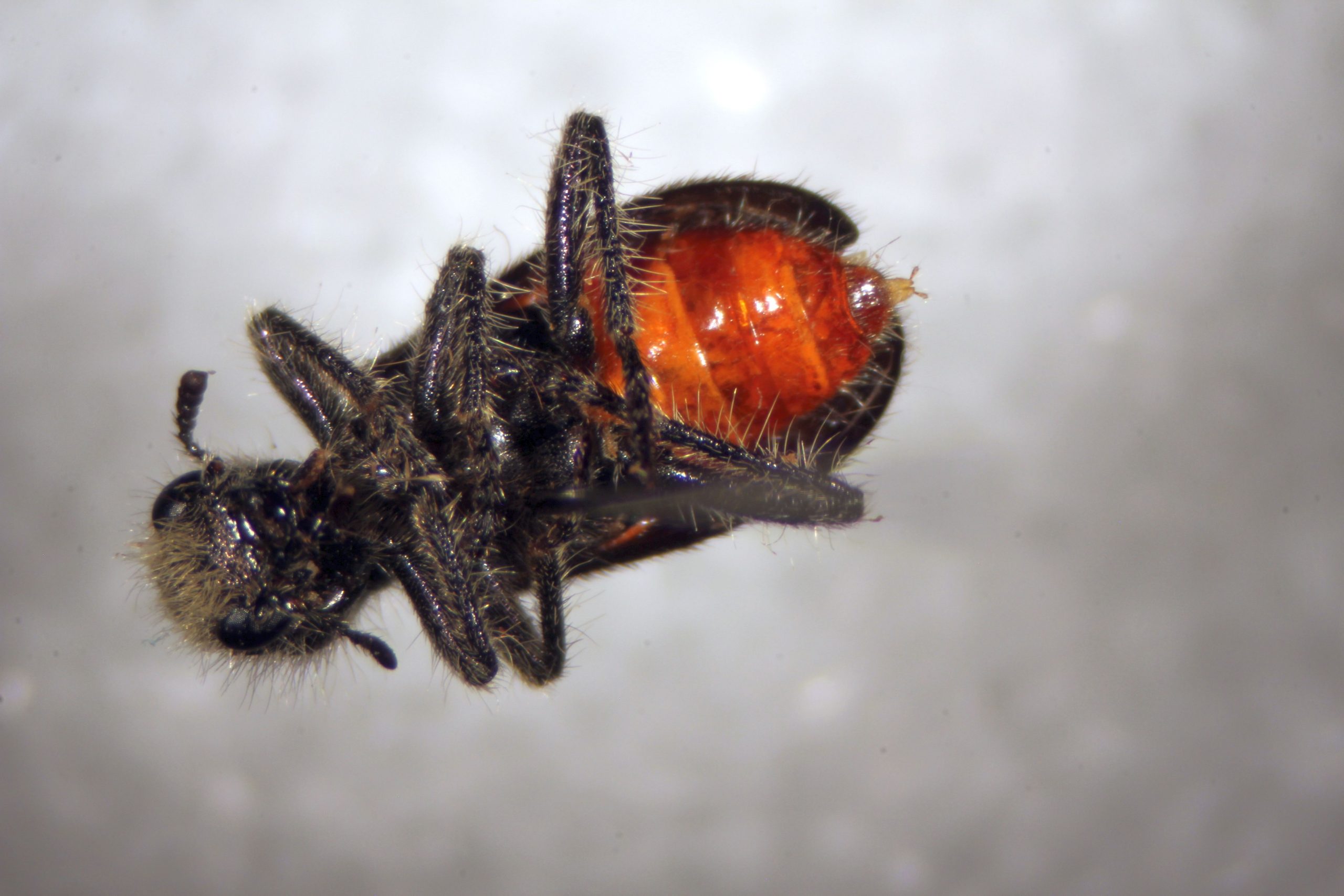
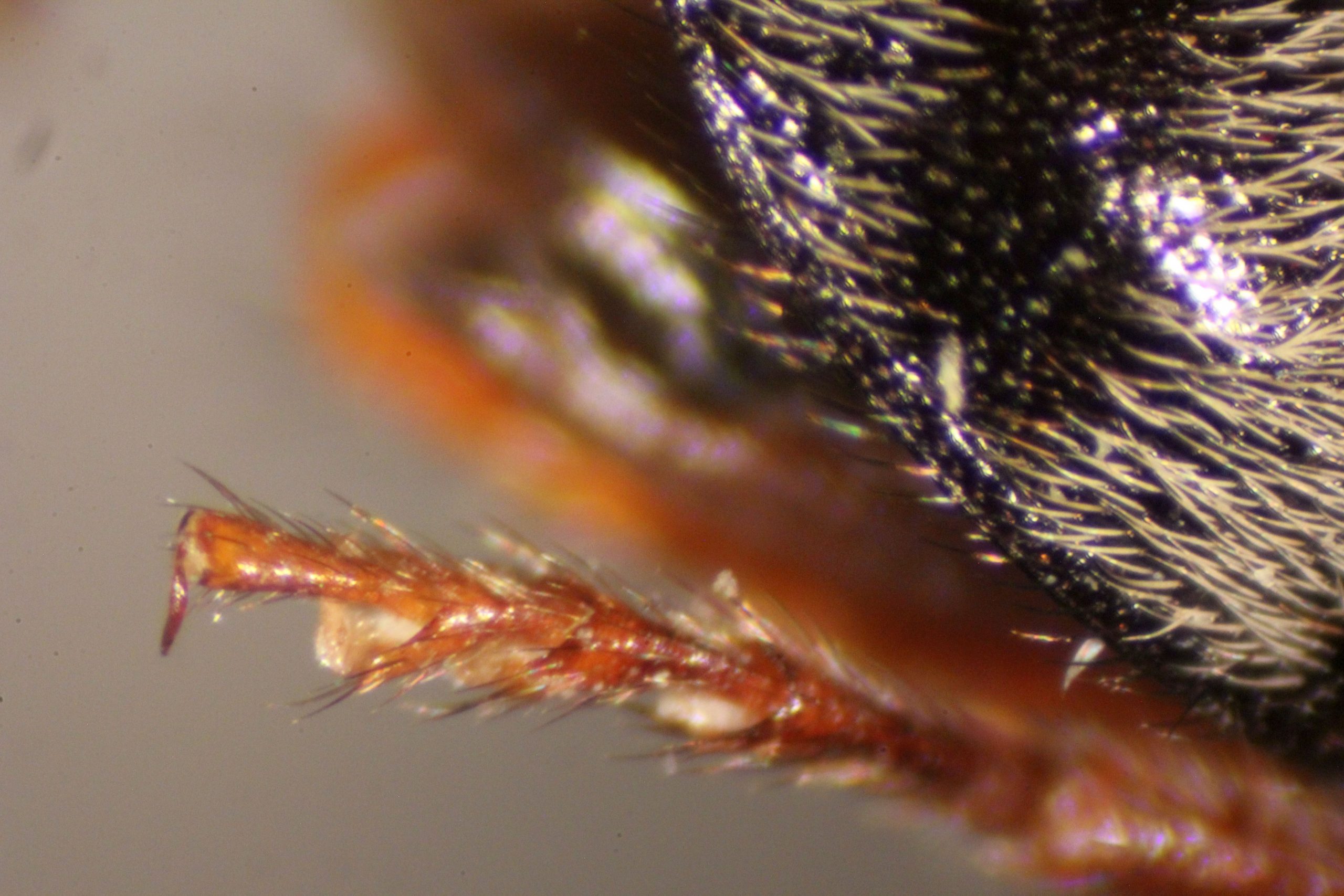
Cucujidae
The flat bark beetles, Cucujidae, are also voracious predators of bark beetles. They are elongate, dorsoventrally flattened, and the elytra can be almost parallel-sided. Adults are also often reddish in colour. The tarsal formula is 5-5-5 in females, but 5-5-4 in males.
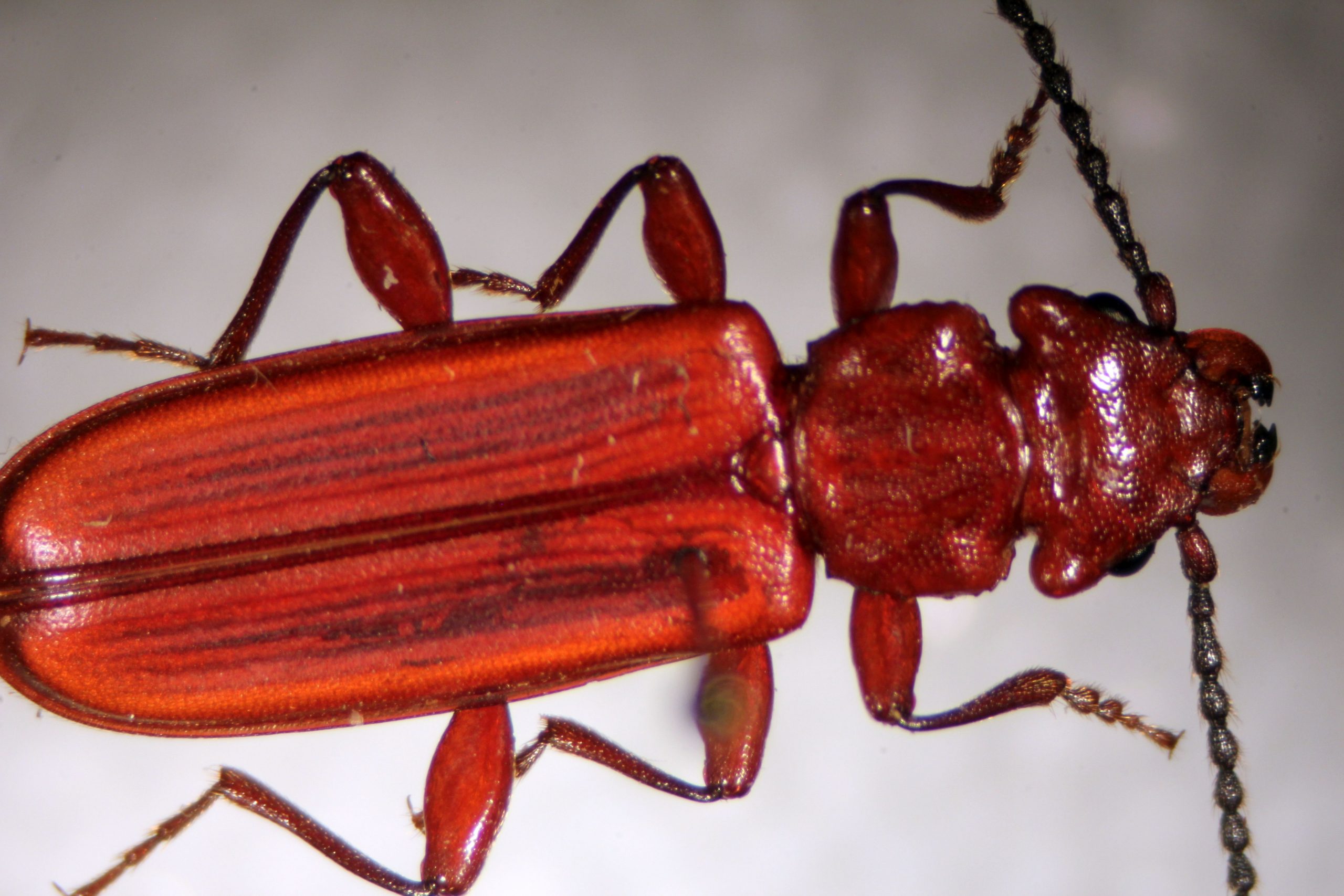
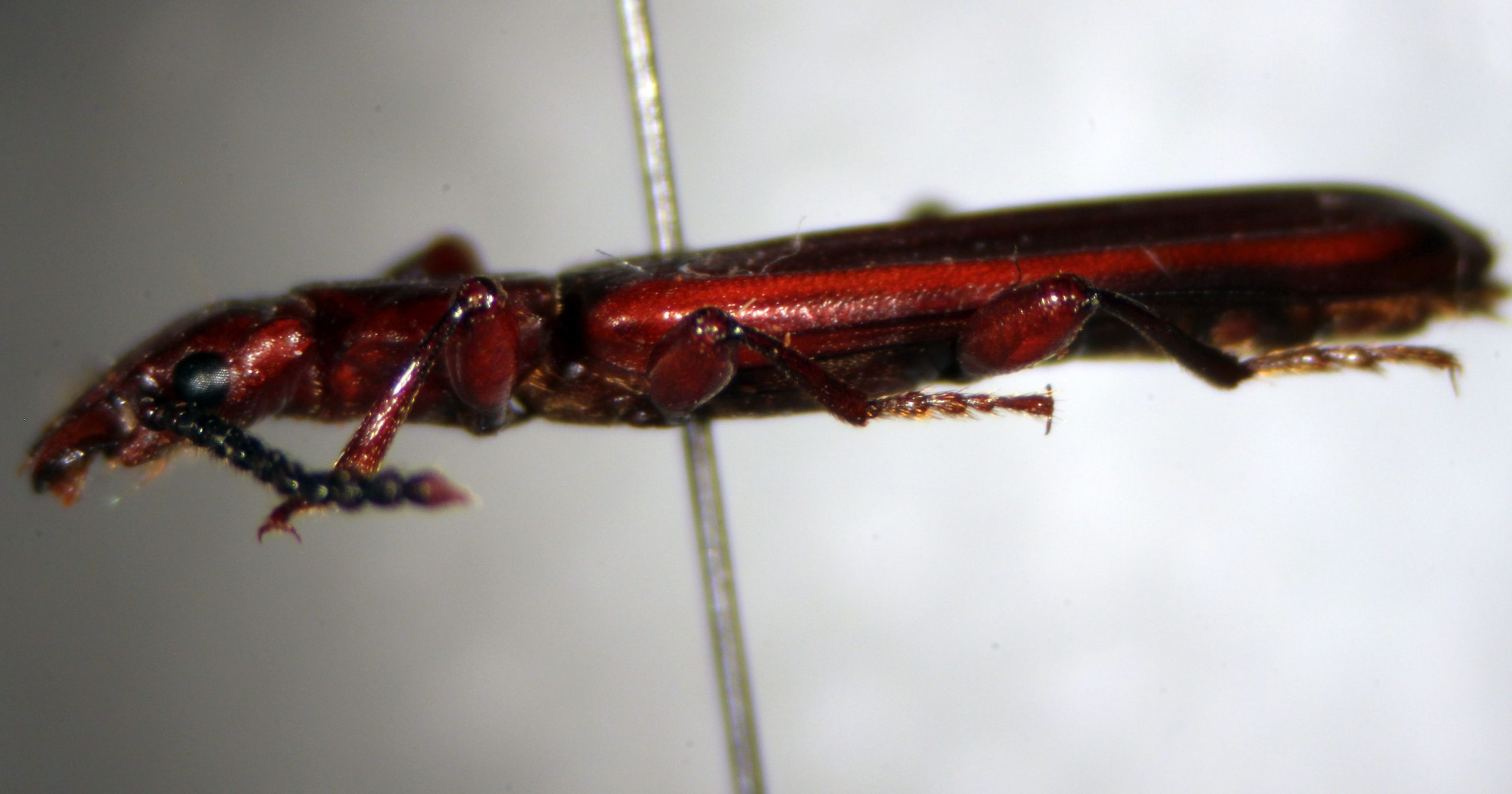
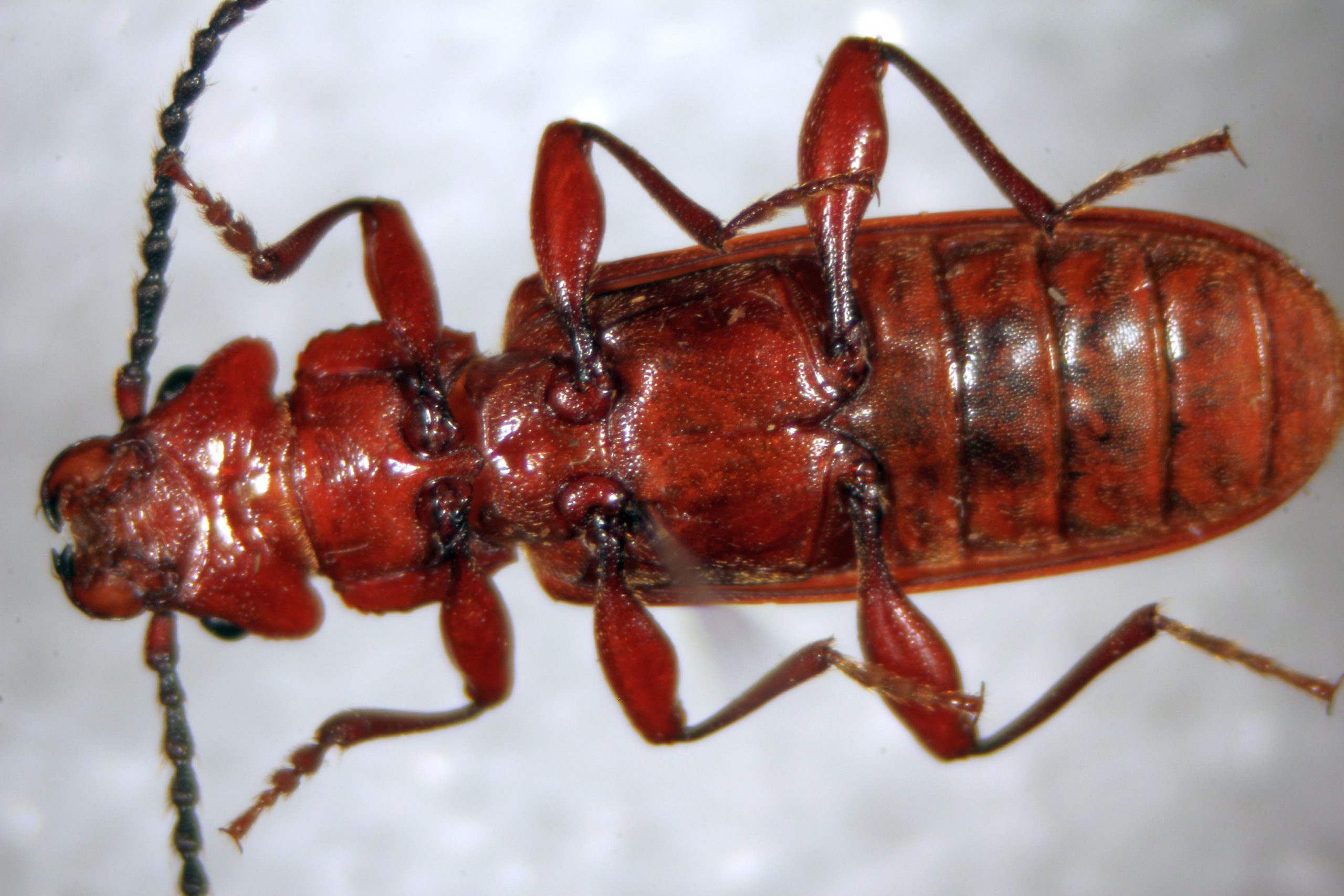
Coccinellidae
Coccinellidae are the ladybird beetles, or “ladybugs”. They are rounded, convex beetles with clubbed antennae, often hidden beneath the pronotum. The tarsal formula is 4-4-4, but count carefully! Segment three is small and hidden between the lobes of segment 2. Both larvae and adults are voracious predators, especially of soft-bodied insects like aphids. Coccinellidae are frequently used as biological control agents in greenhouses and gardens. They have defensive scent glands to help repel predators, as you may notice if you handle them.
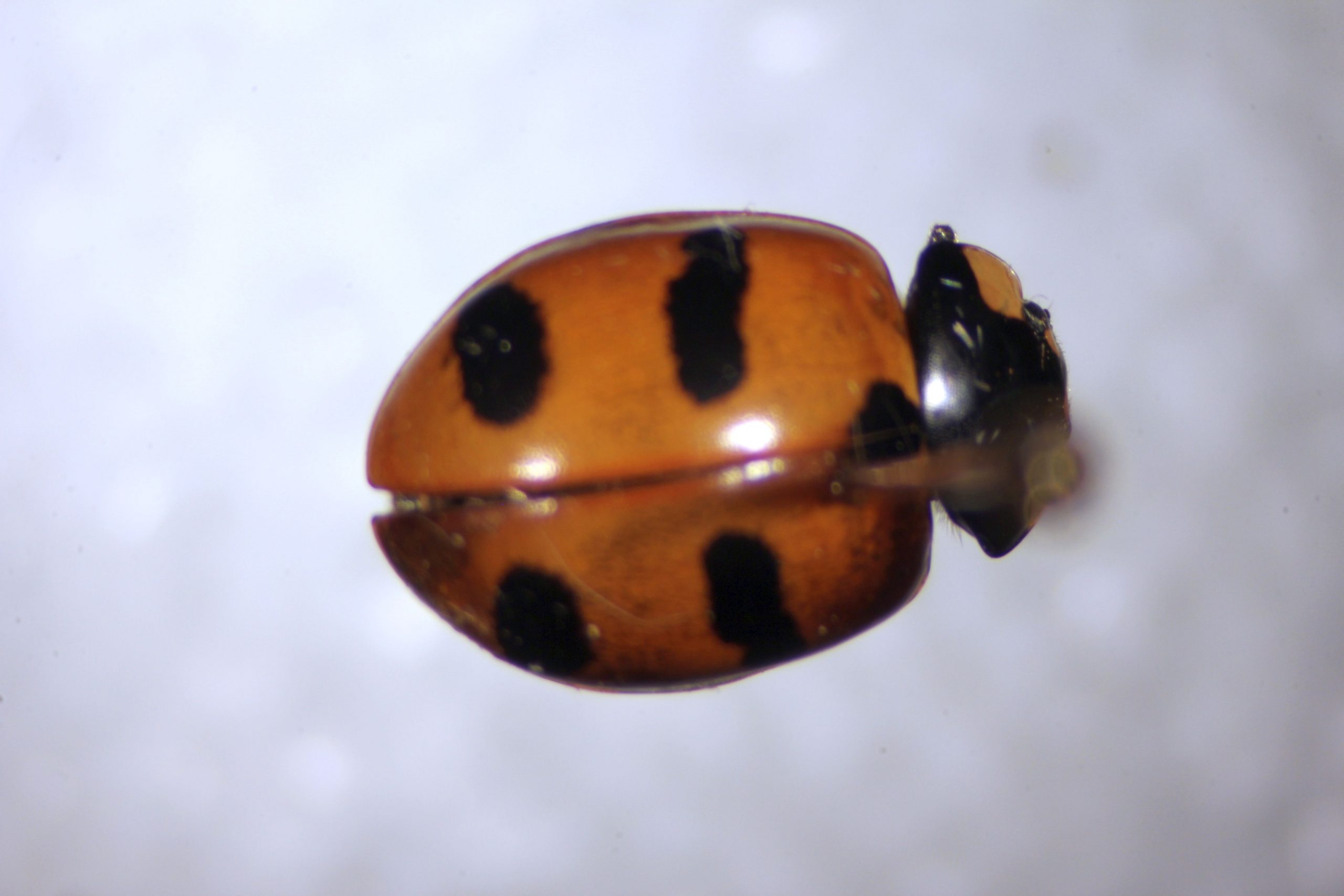
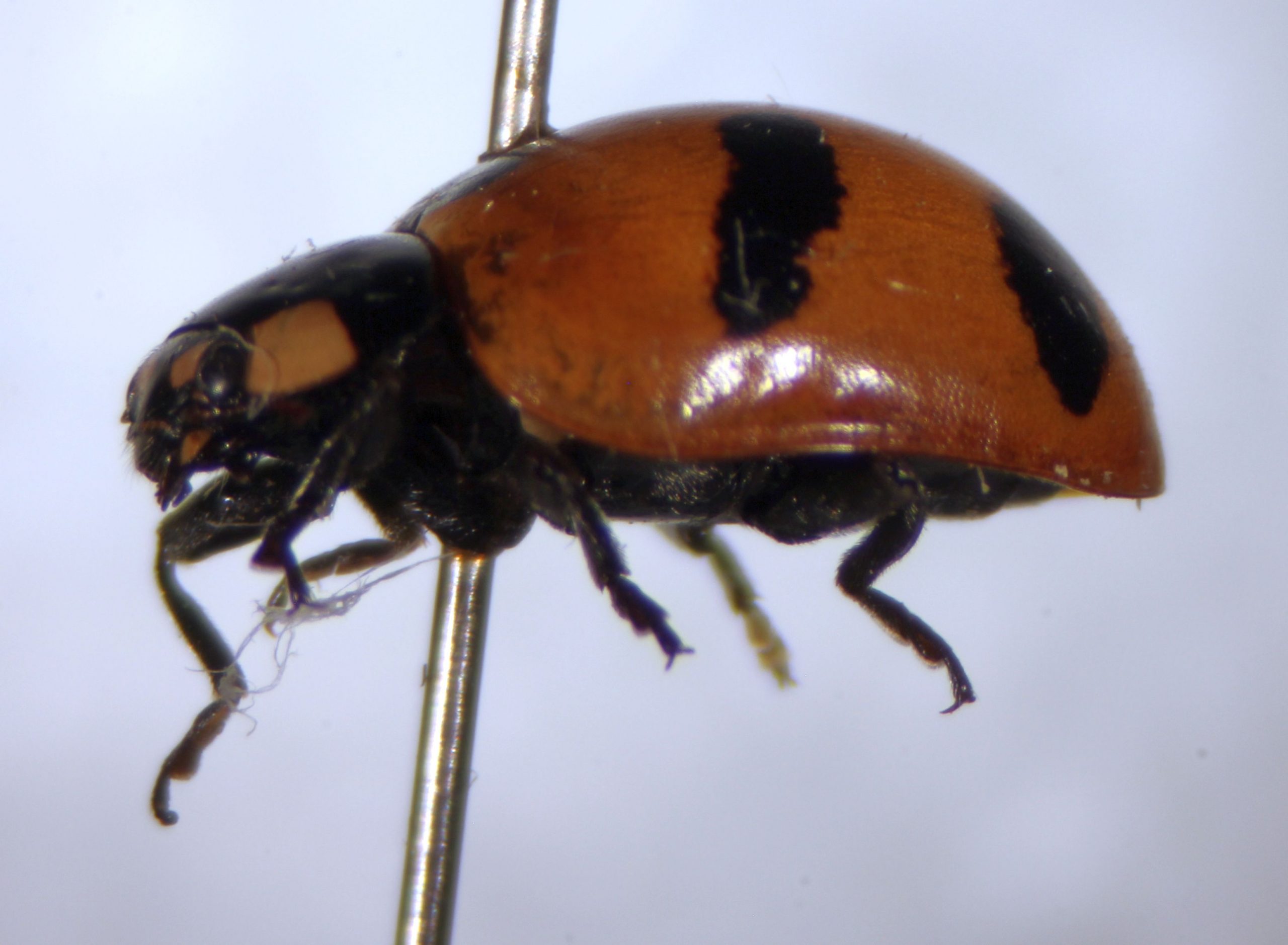
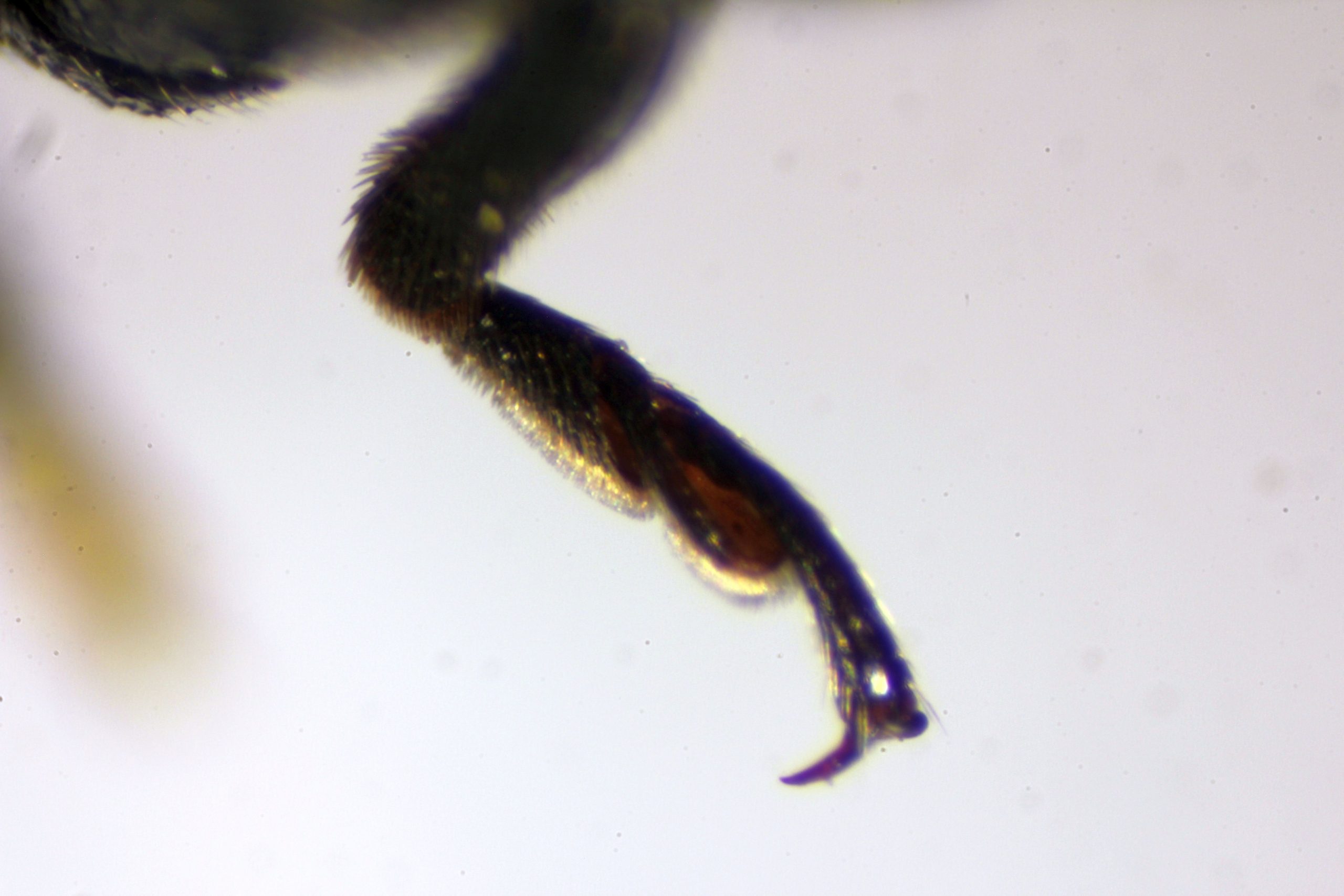

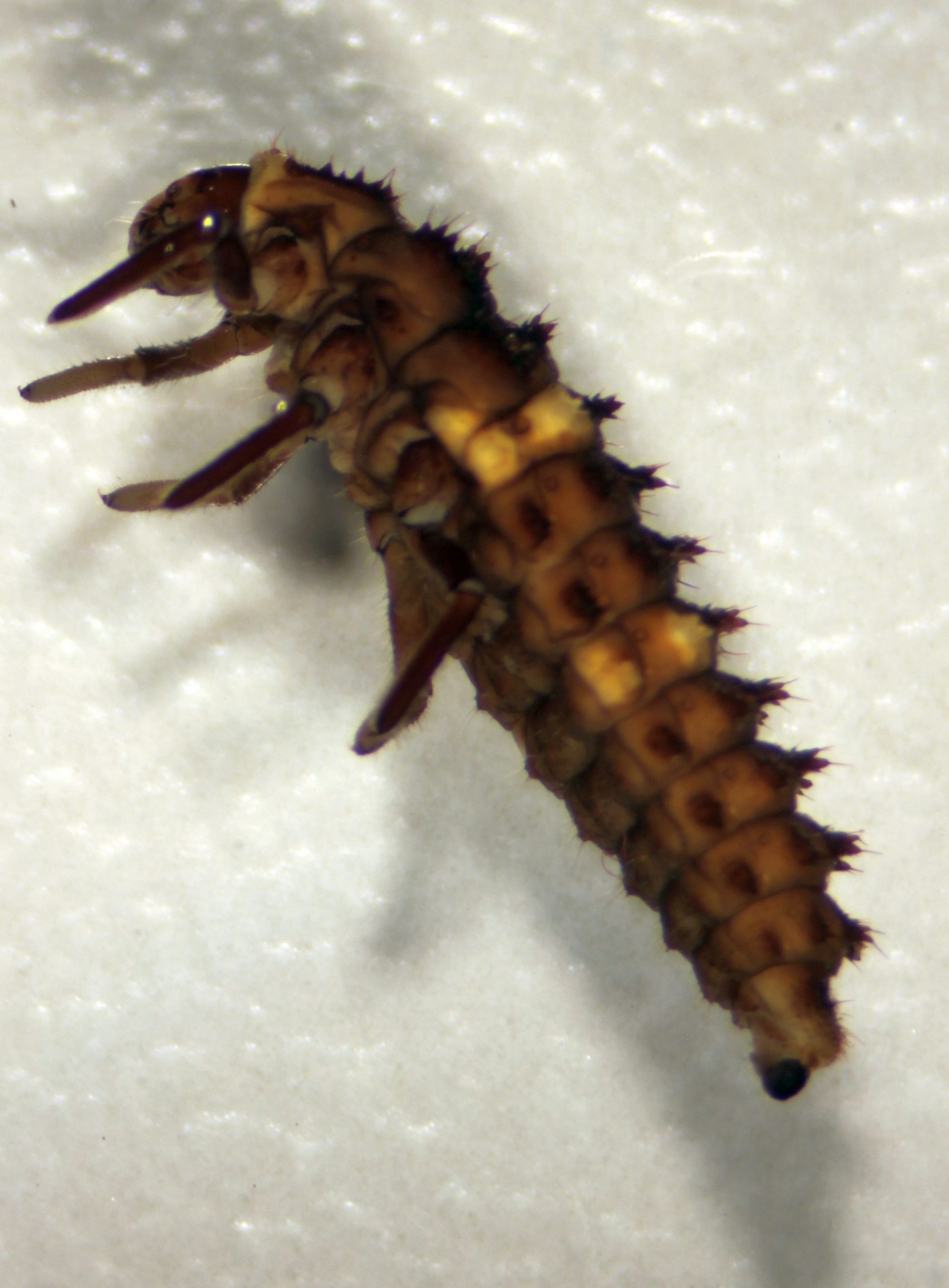
Tenebrionidae
The darkling beetles, Tenebrionidae, include beetles with a diverse range of body shapes and biology. You may be familiar with the larvae, which are sold as mealworms for the pet trade. The family also includes some desert-inhabiting beetles, well-known for using their elytra to collect condensation for drinking. A local species is often mistaken for a ground beetle – be sure to check whether the hind coxae cross the hind margin of the first abdominal segment or not! The tarsal formula is 5-5-4, and a hind tarsus is pictured below. You may also encounter a question in some keys, asking whether the front coxal cavities are “closed” or “open”. If it looks like the cavity where the front coxa is inserted is complete, and wraps around behind the coxa, it is “closed”. If the cavity looks incomplete, and doesn’t wrap around the entire base of the coxa, then it is “open”.
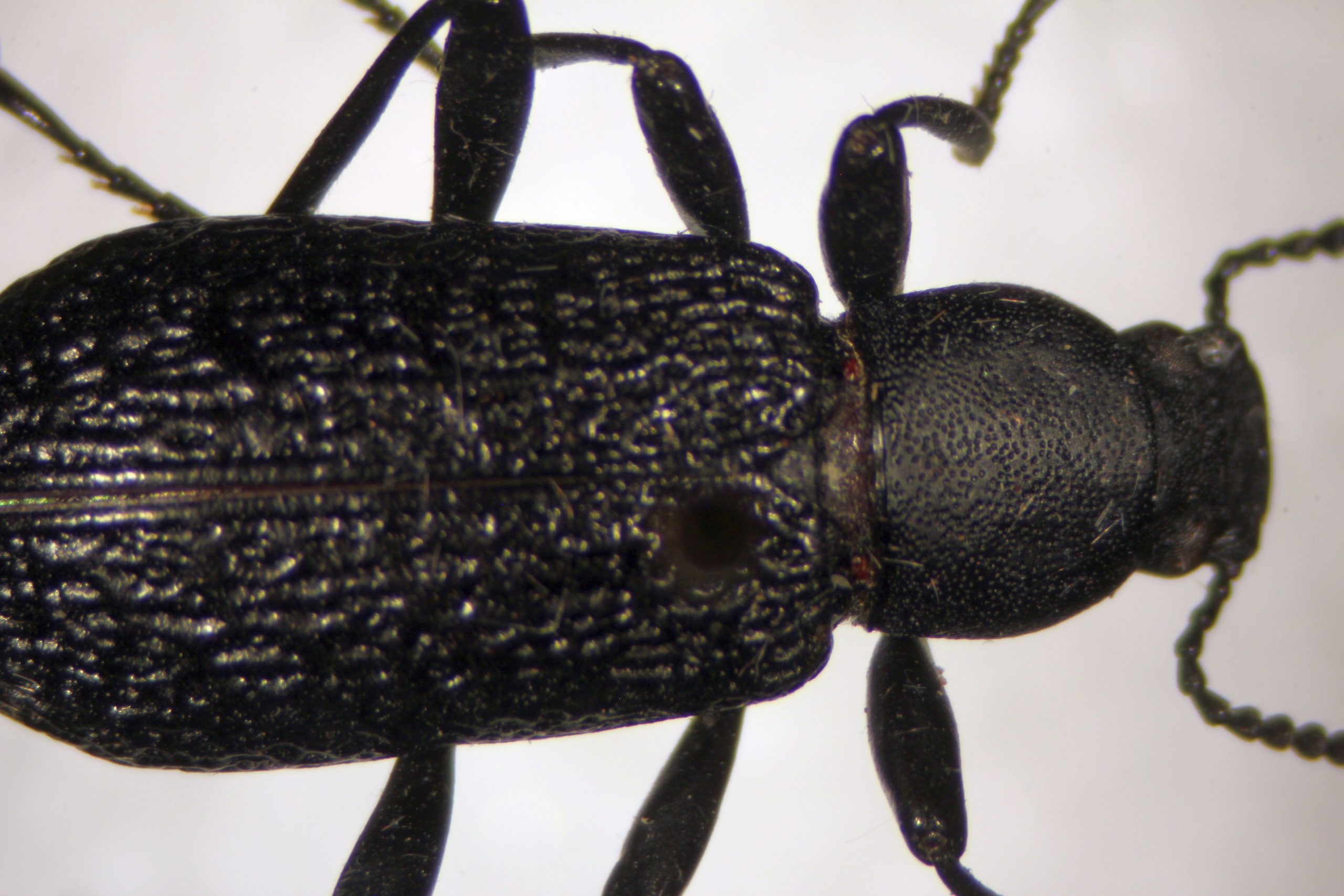
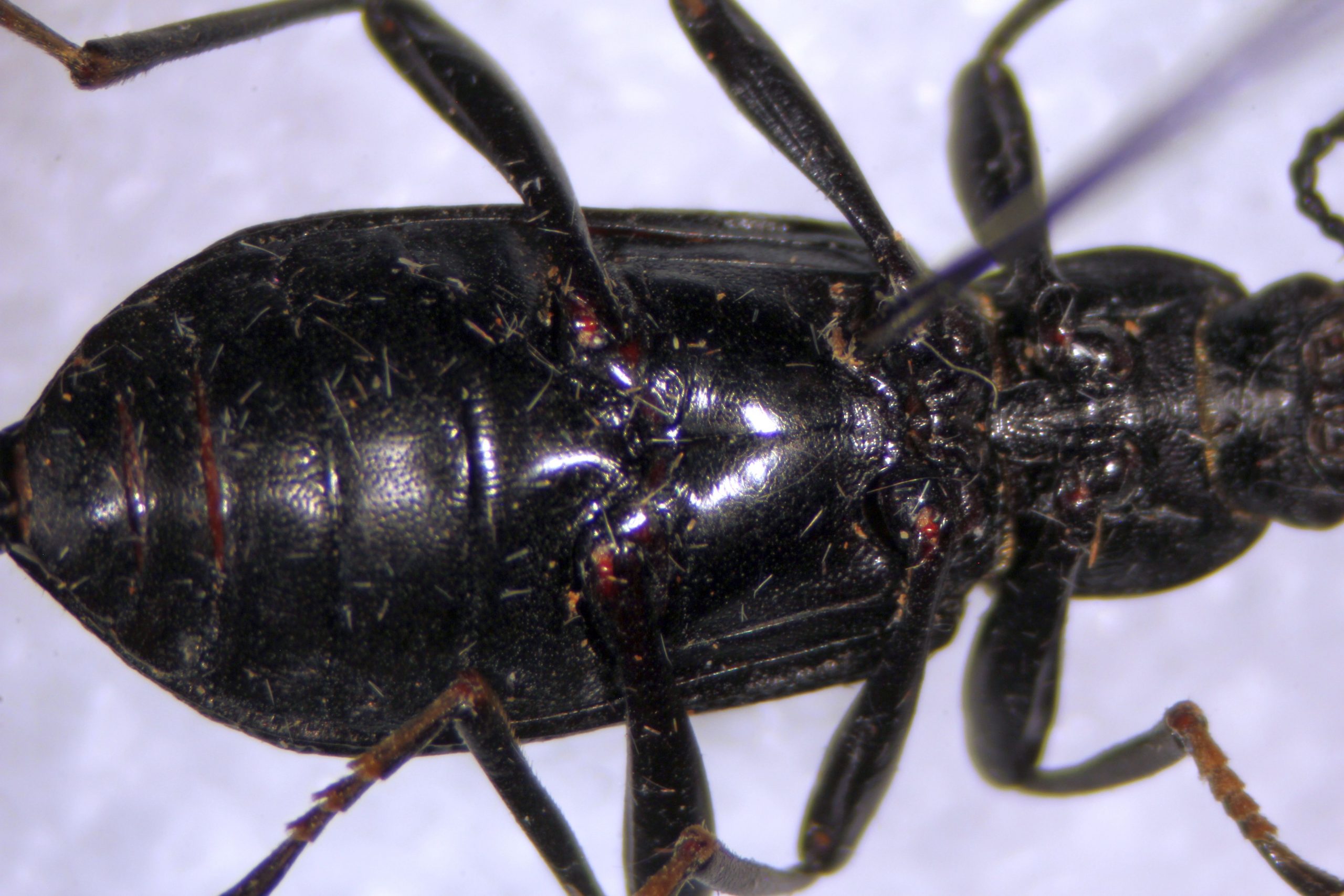
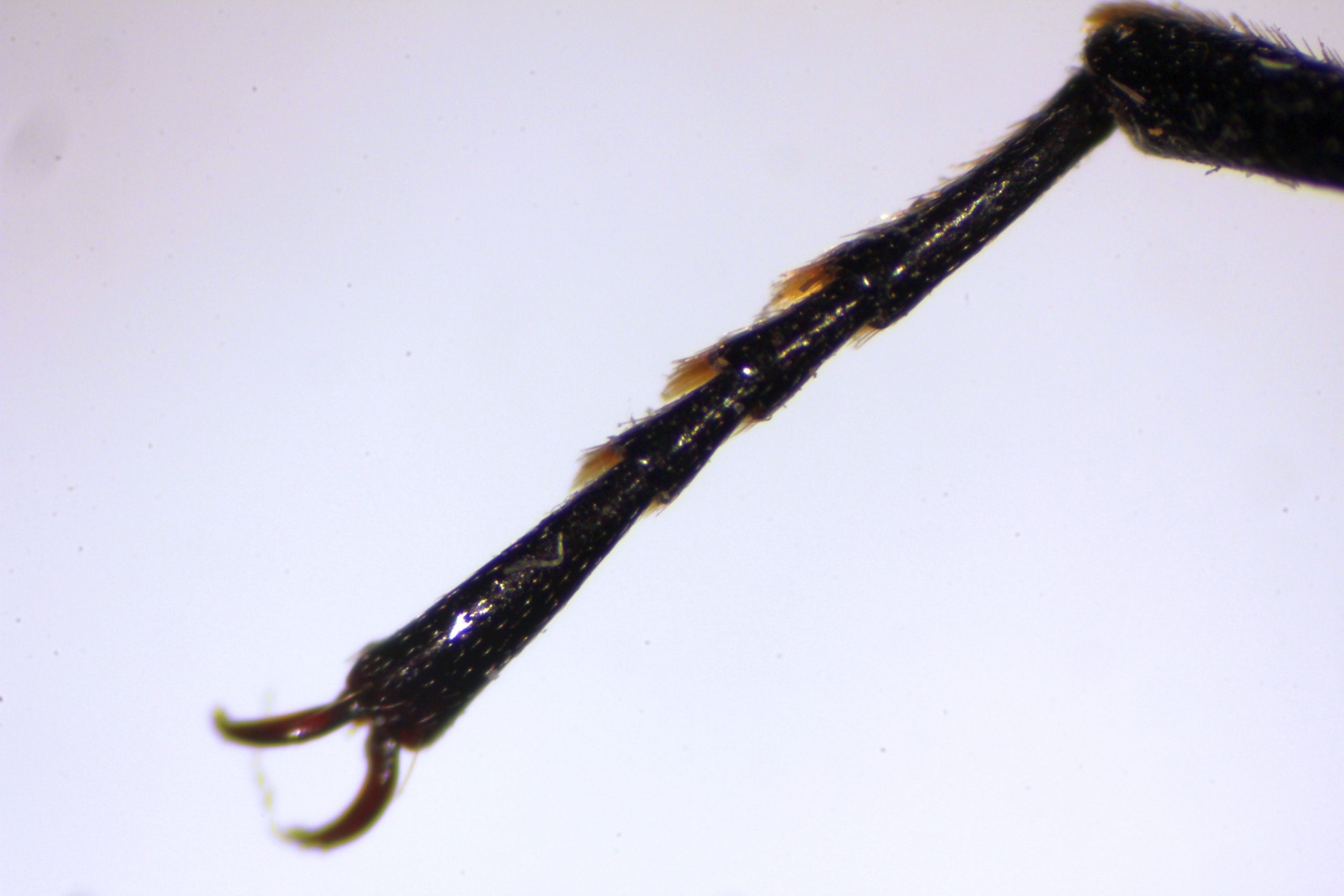
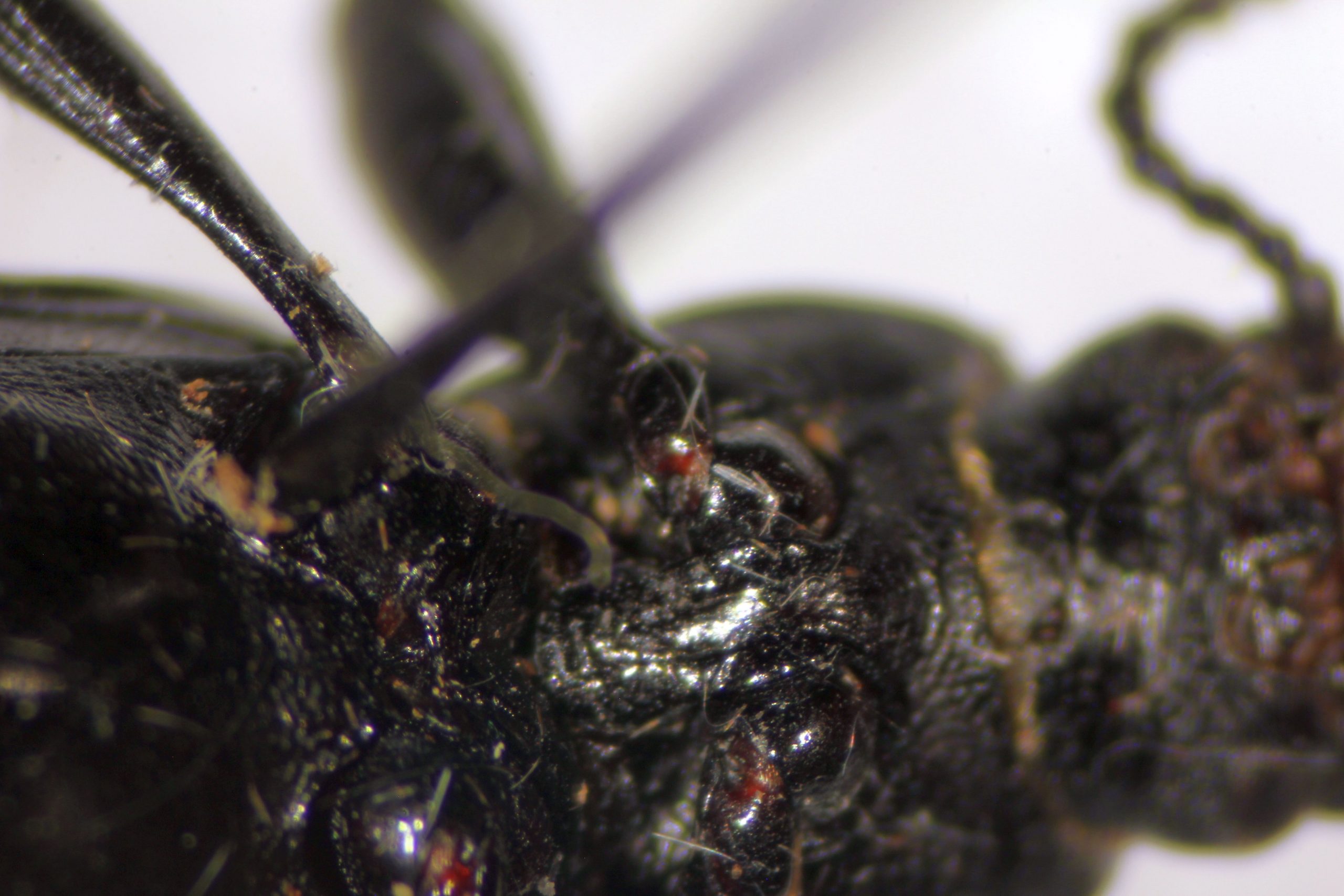
Meloidae
Meloidae are also known as the blister beetles. Most members of this family produce an irritant compound called cantharidin as a defense. Cantharidin is poisonous, and causes blistering of the skin and a generalized inflammatory response, including swelling and increased blood flow. The compound has been used by humans to treat warts, and has also gained notoriety under the name “Spanish fly”, much touted as an aphrodisiac.
Some species of blister beetles are hypermetamorphic. Hypermetamorphosis is a variant of holometabolous development in which some larval instars are morphologically and ecologically distinct from others. In a typical hypermetamorphic Meloidae life cycle, the first instar is campodeiform (resembling a family of Diplura), mobile, and known as a planidium or triungulin. It lives on plants until it finds a bee or a grasshopper (depending on the species), to which it attaches to be carried back to host’s eggs. It then moults to a legless grub, and feeds on eggs or larvae and on the honey and pollen stored by the bee.
Adult beetles sometimes have shortened elytra, and are often metallic. The tarsal formula is 5-5-4, and the tarsal claws are each split into two. They tend to have a narrow pronotum.
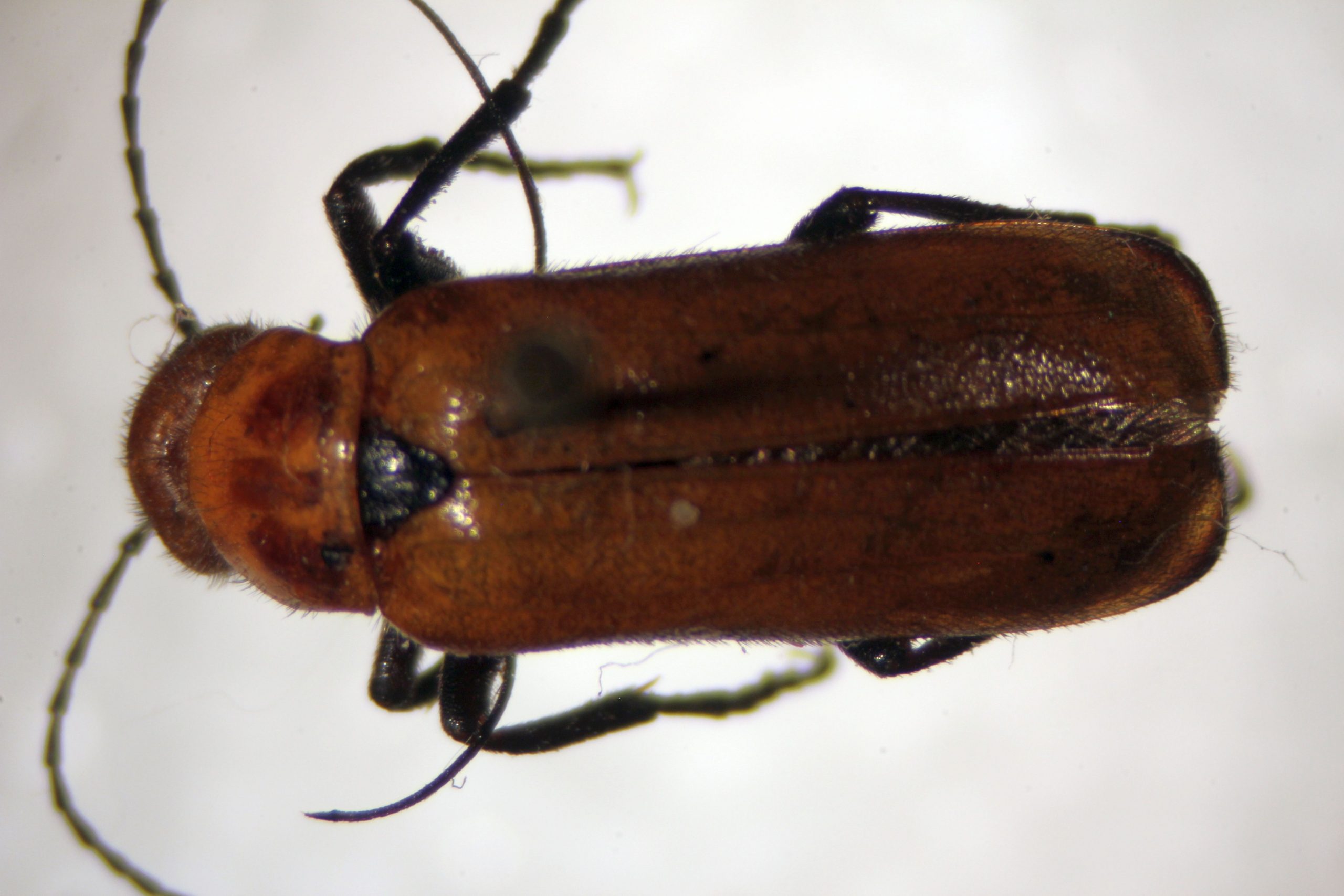
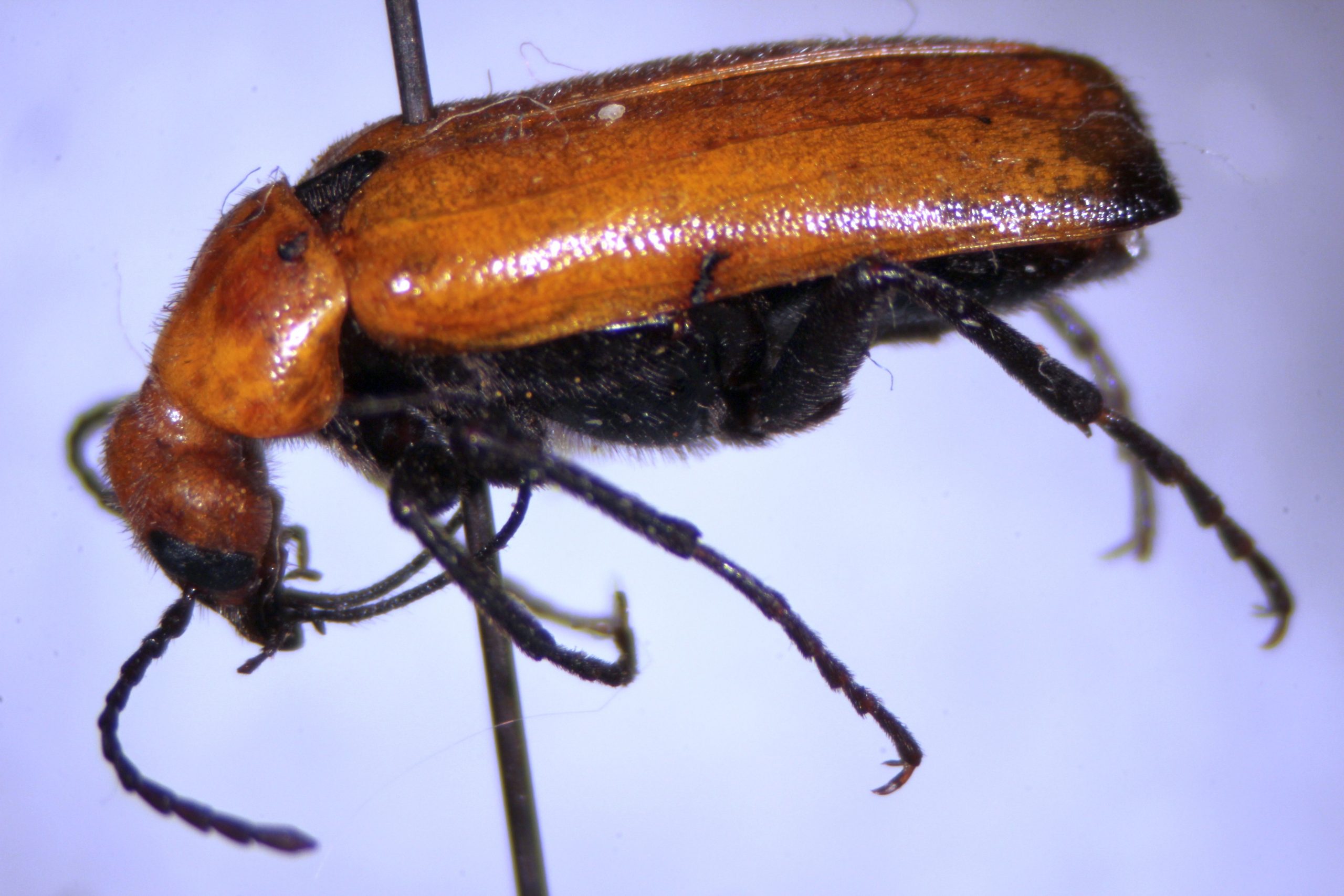
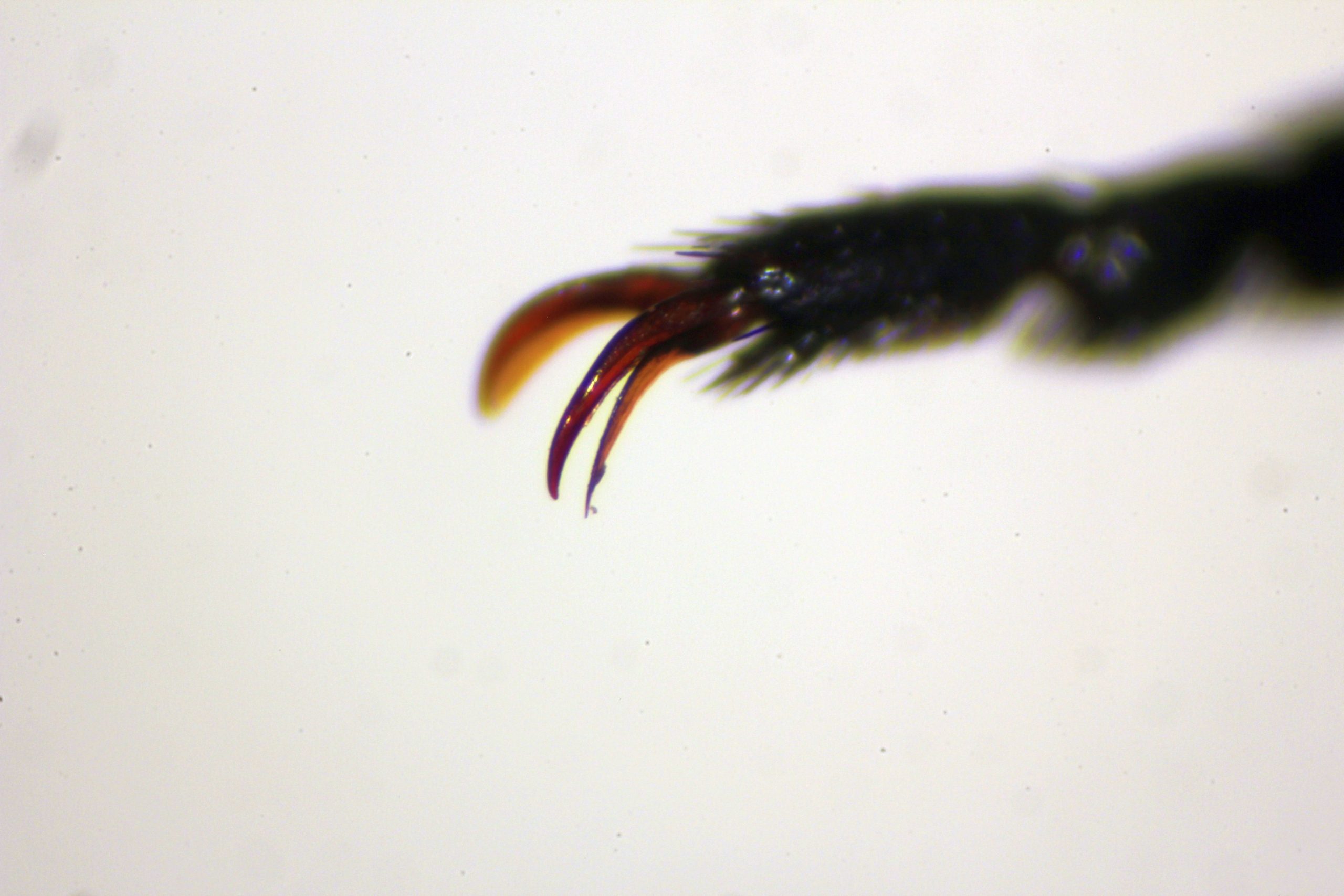
Cerambycidae
Cerambycidae are called round-headed borers or long-horned beetles. Their habits and habitats tend to be similar to those of Buprestidae, as this family also contains wood-boring beetles. The adults tend to be rounder in cross-section, whereas Buprestidae are elliptical, and adult Cerambycidae mostly have extremely long antennae. As you might expect of an insect that lives inside wood as a larva, and then exits the wood as an adult, they often have large, heavily sclerotized mandibles. Some species will also use those mandibles in self-defense – so be careful when handling live specimens! A few species also produce sound, through stridulation, as a defensive tactic. If you catch a large specimen, it is not unusual to hear a squeaking sound from the net. The tarsal formula for these beetles is 5-5-5 but, at first glance, they appear to be 4-4-4. Note the strongly lobed third tarsal segment, which almost completely conceals the fourth segment. Also note that the compound eyes on some species can appear to wrap around the base of the antennae, or may even be completely divided by the antennal bases.
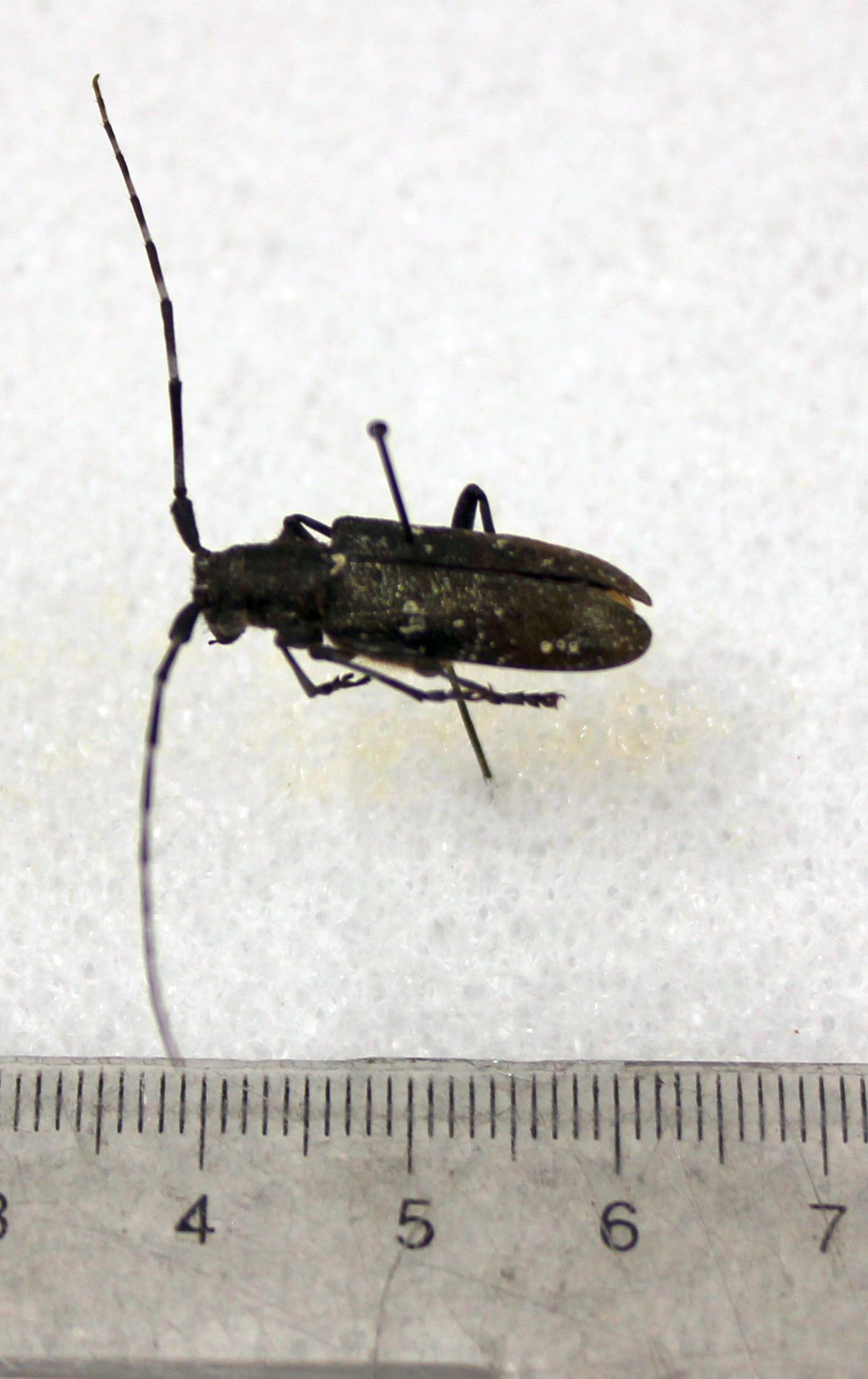
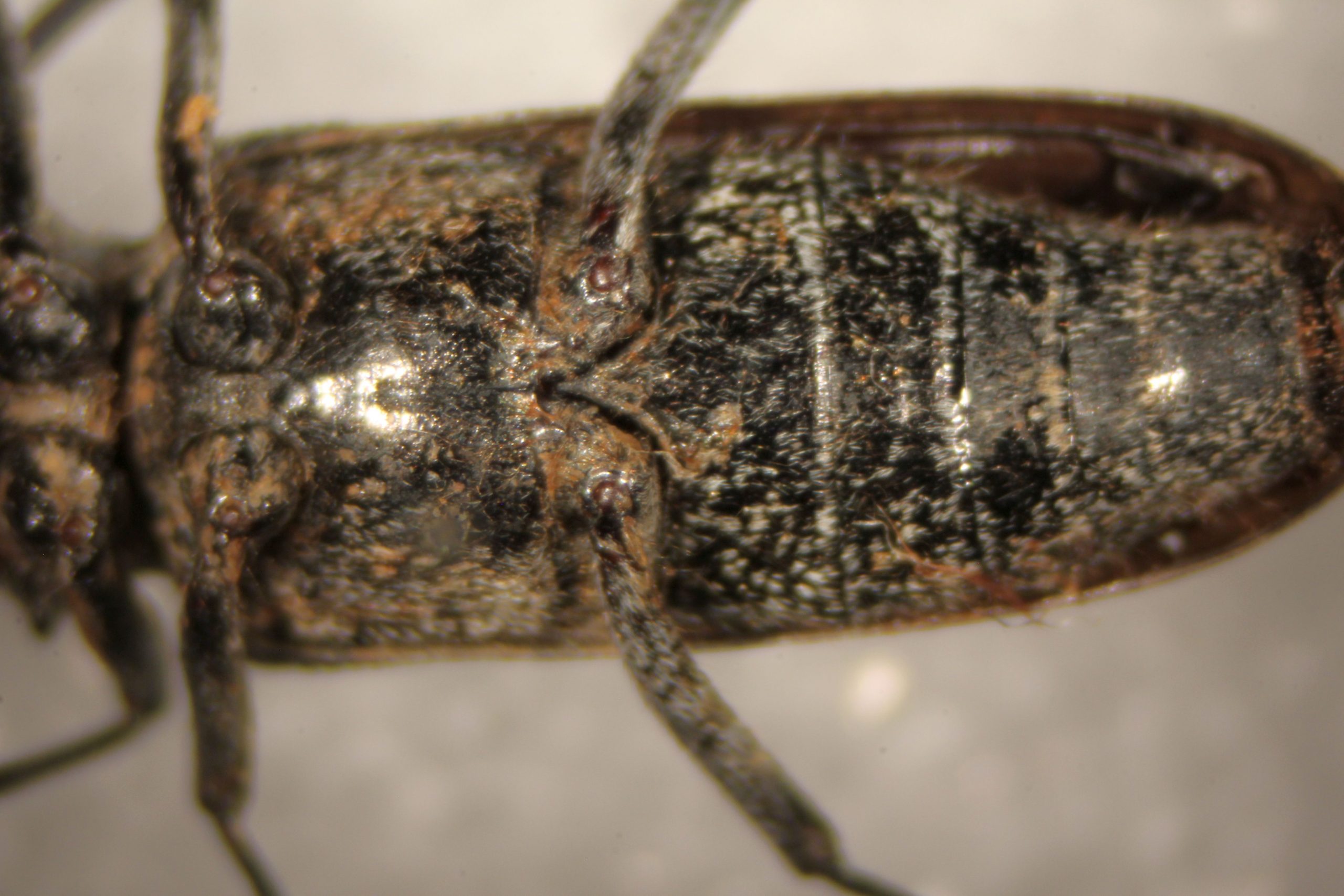
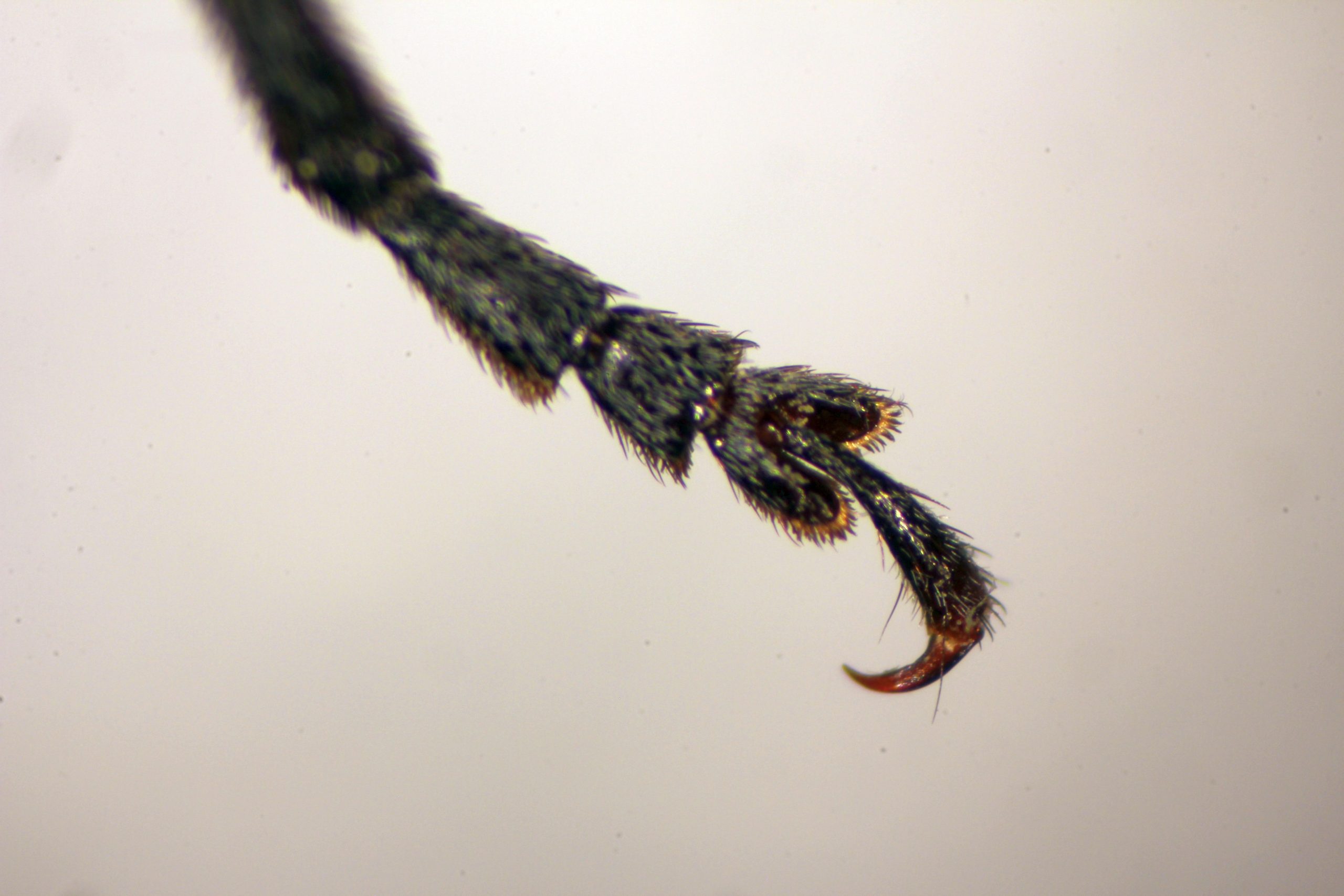
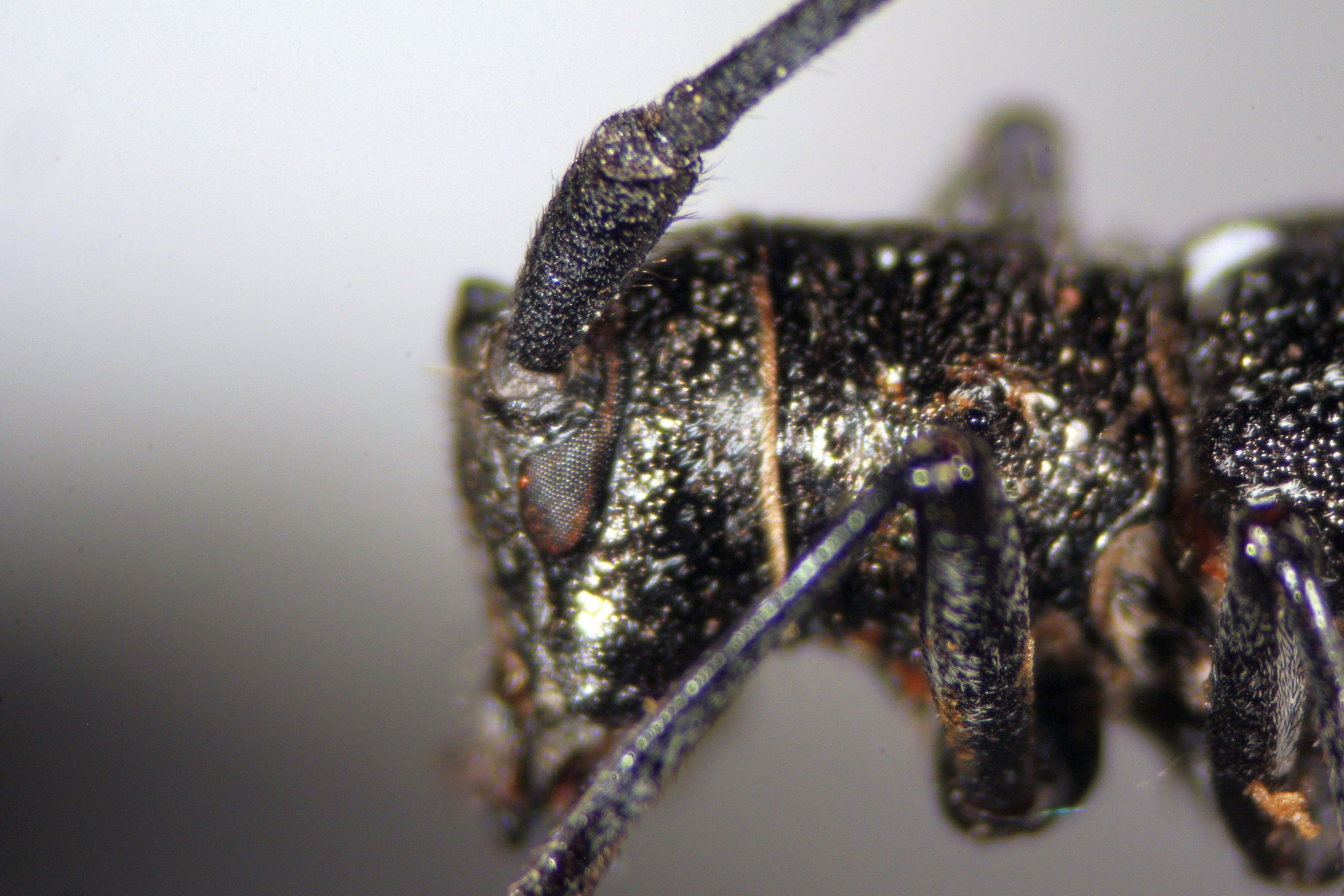
Chrysomelidae
Chrysomelidae includes the leaf beetles, as well as the tortoise beetles and flea beetles. This is a large, diverse family of about 55,000 species. Many significant pests of agricultural crops, e.g. the Colorado potato beetle, Leptinotarsa decemlineata, are in this family. In addition to the direct damage to plants caused by beetles feeding on their leaves, some species in this family are known or thought to transmit plant viruses and other pathogens.
The tarsal formula, like that of the Cerambycidae, is actually 5-5-5, but often apparently 4-4-4. Many Chrysomelidae closely resemble Coccinellidae (actually 4-4-4, but apparently 3-3-3!), both in body shape and even in colouration, so this trait will help you to distinguish the two families. Chrysomelidae lack the long antennae of Cerambycidae, and they do not have compound eyes that are divided by or wrap around the antennal bases. They also lack a “snout” or elbowed antennae, which distinguishes them from most of the Curculionidae. Many species are metallic or brightly-coloured.
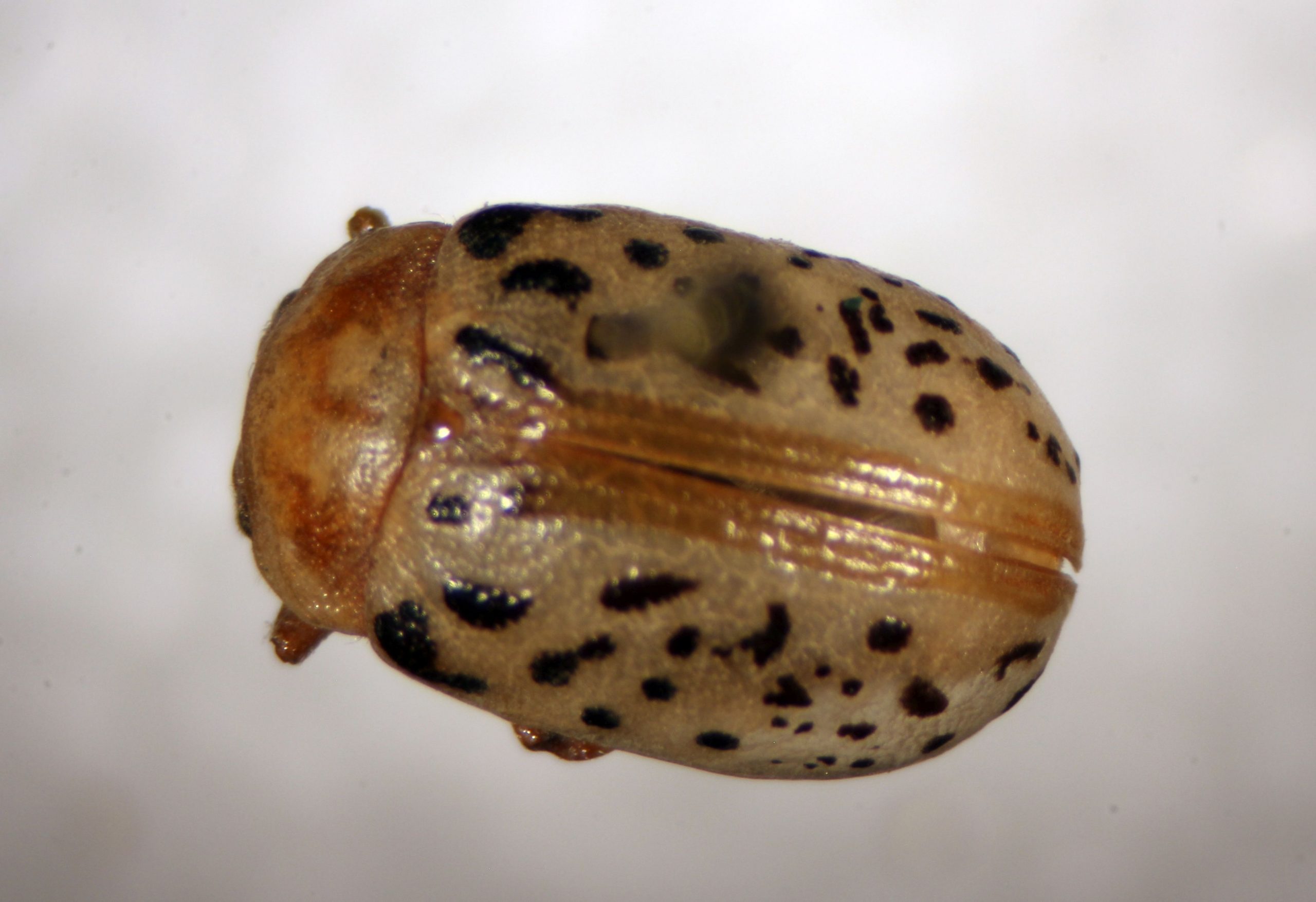
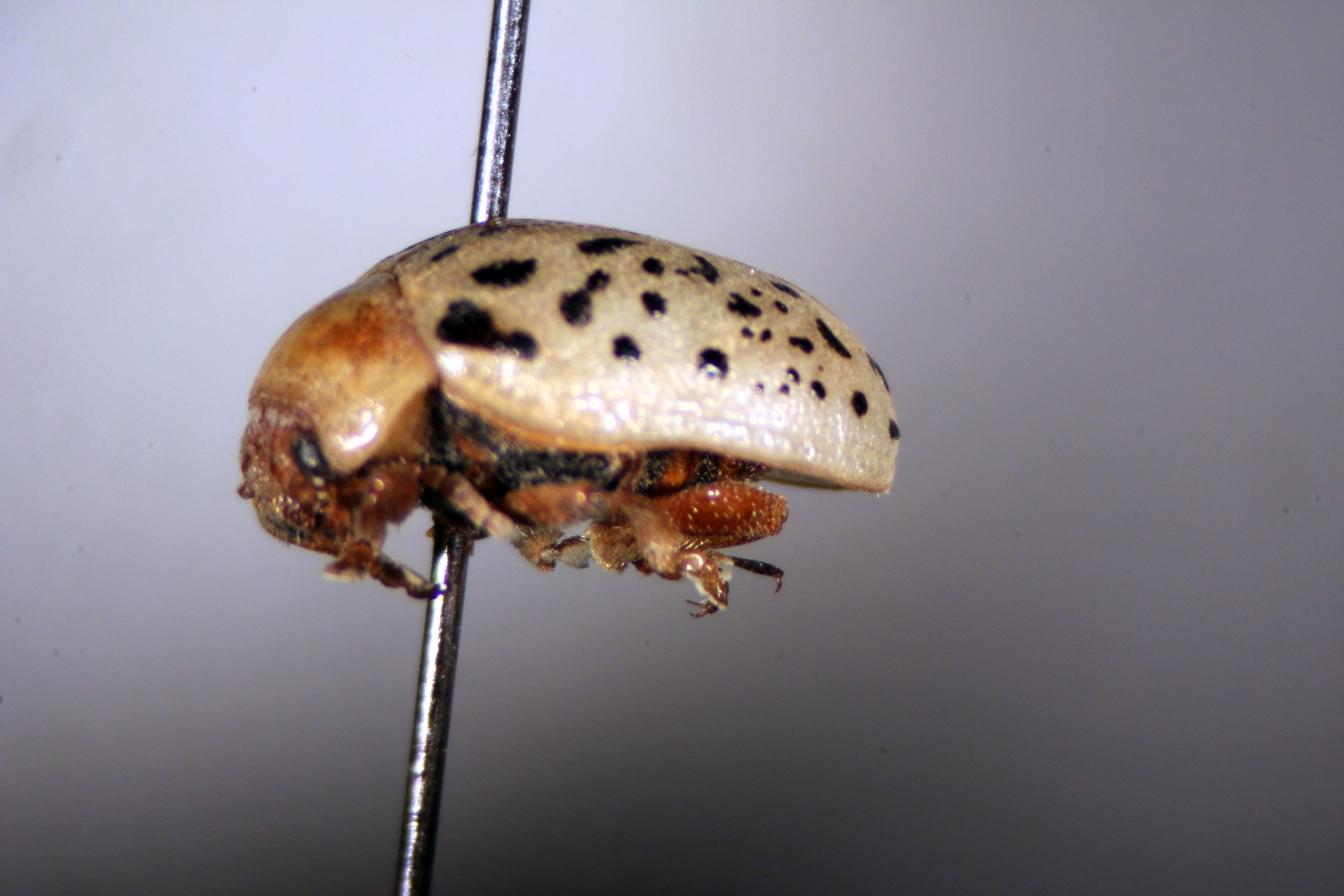
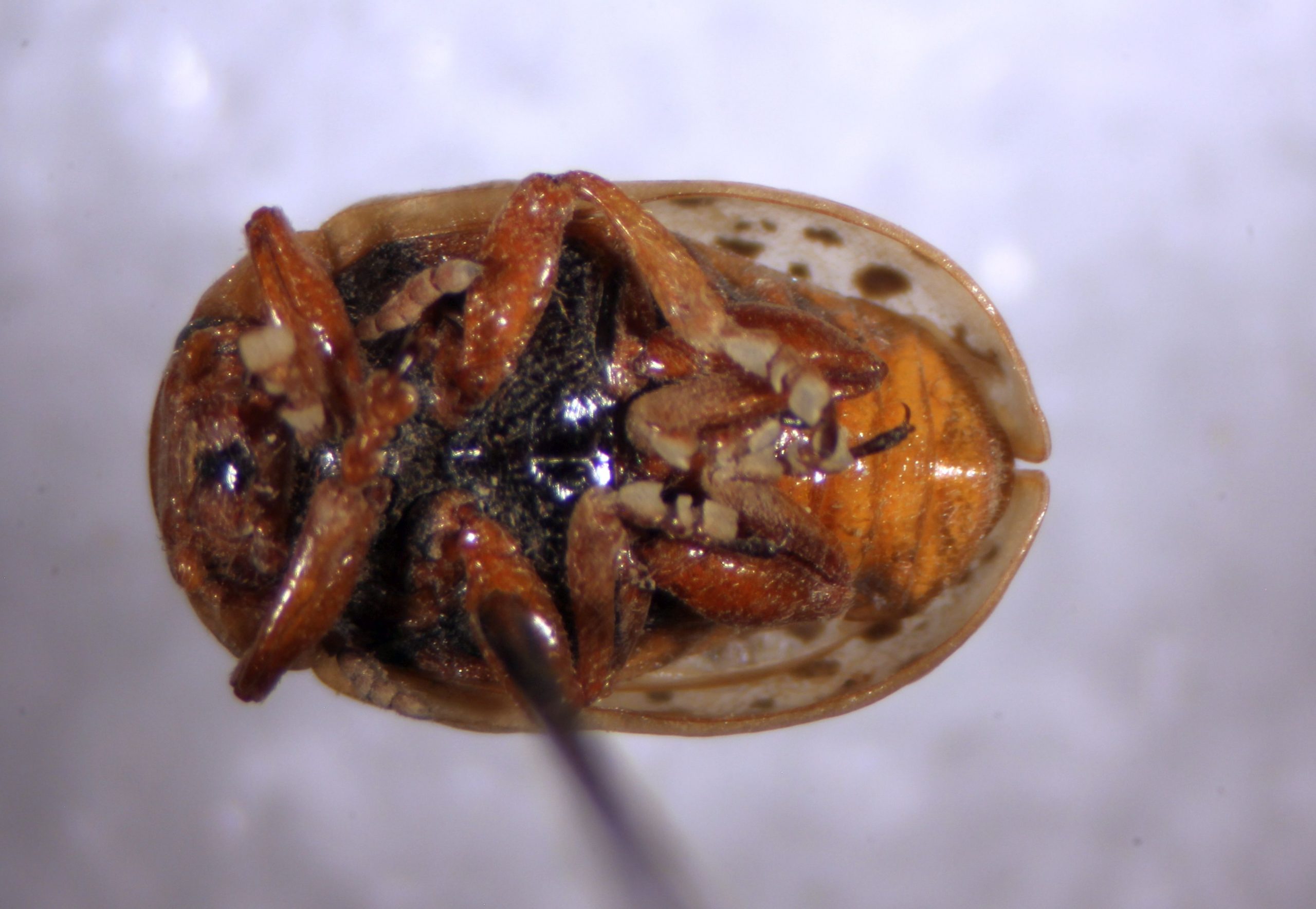
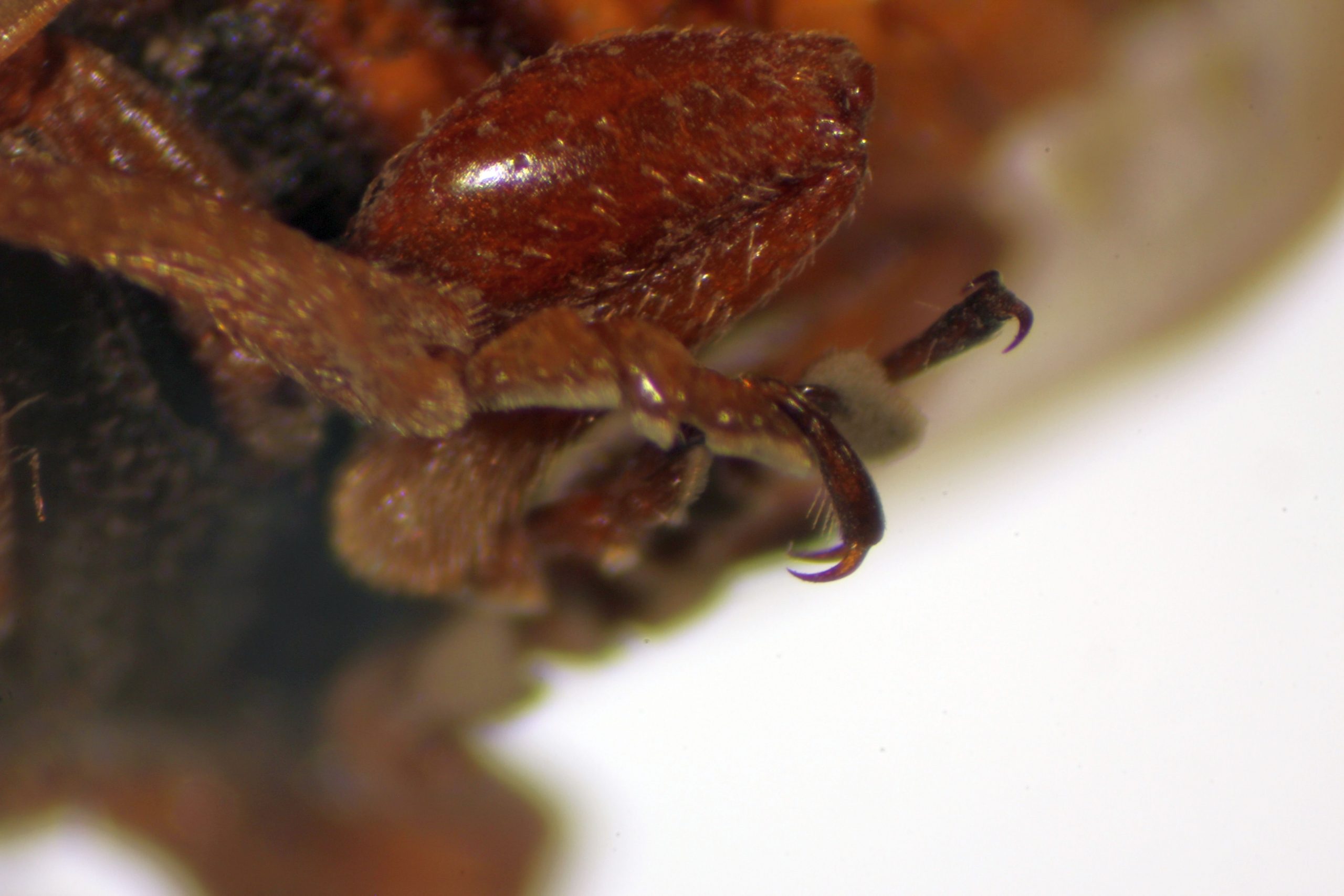
Curculionidae
We have reached the last of the beetle families we will cover in this course, the Curculionidae, also known as the snout beetles or weevils. The family as a whole is characterized by having the head prolonged into a snout, with mandibles at the tip of the snout, and elbowed antennae. Weevils are herbivorous, and many species prey on seeds; this habit has made them major pests of agricultural crops and stored products. The snout is useful for this particular feeding style, as the weevil is able to chew a hole into a hard seed coat, then insert the snout into the hole and feed on the seed and endosperm.
This is an enormous family, with plenty of variation and diversity. Most can be readily identified on sight as weevils by the snout and the elbowed antennae.
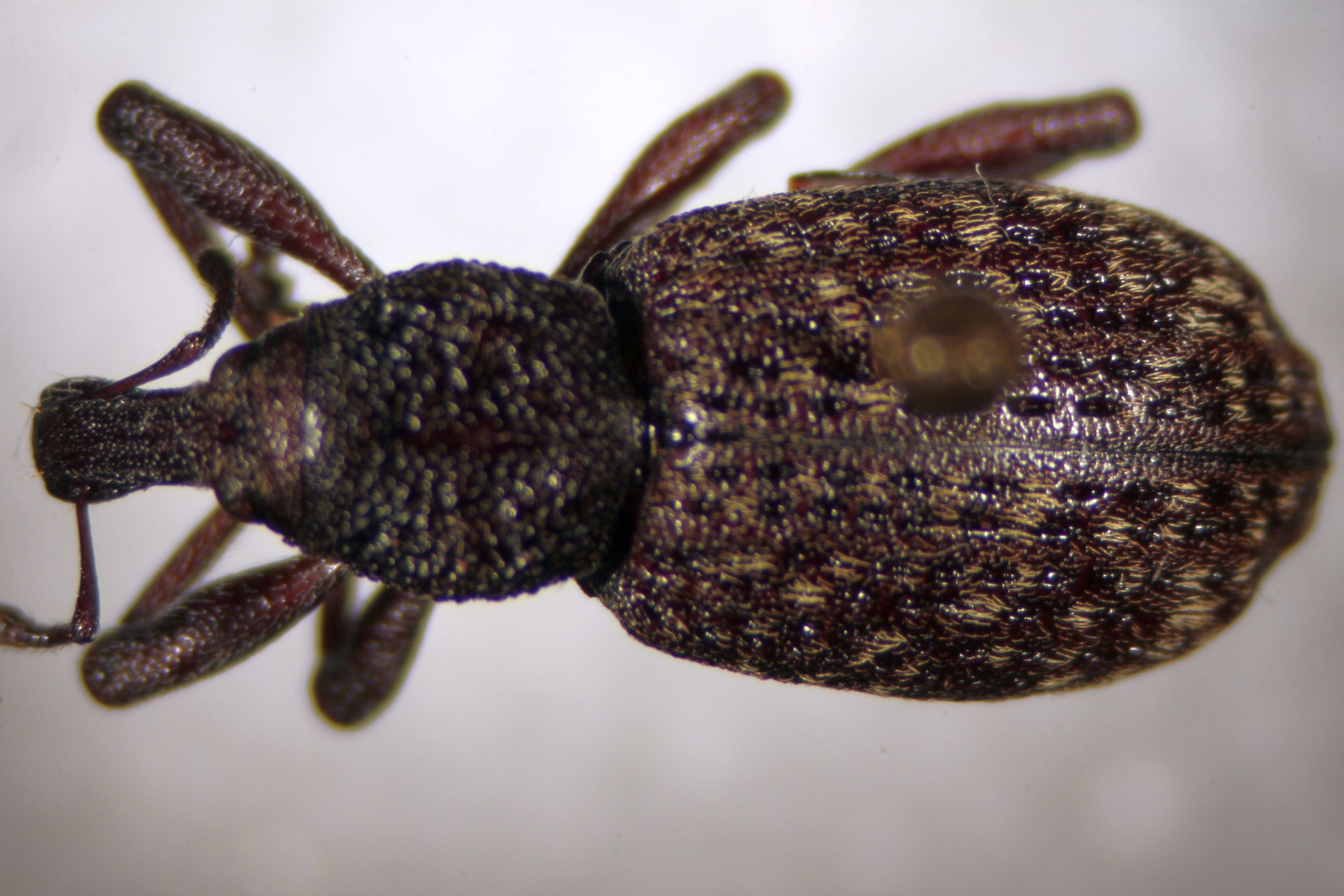
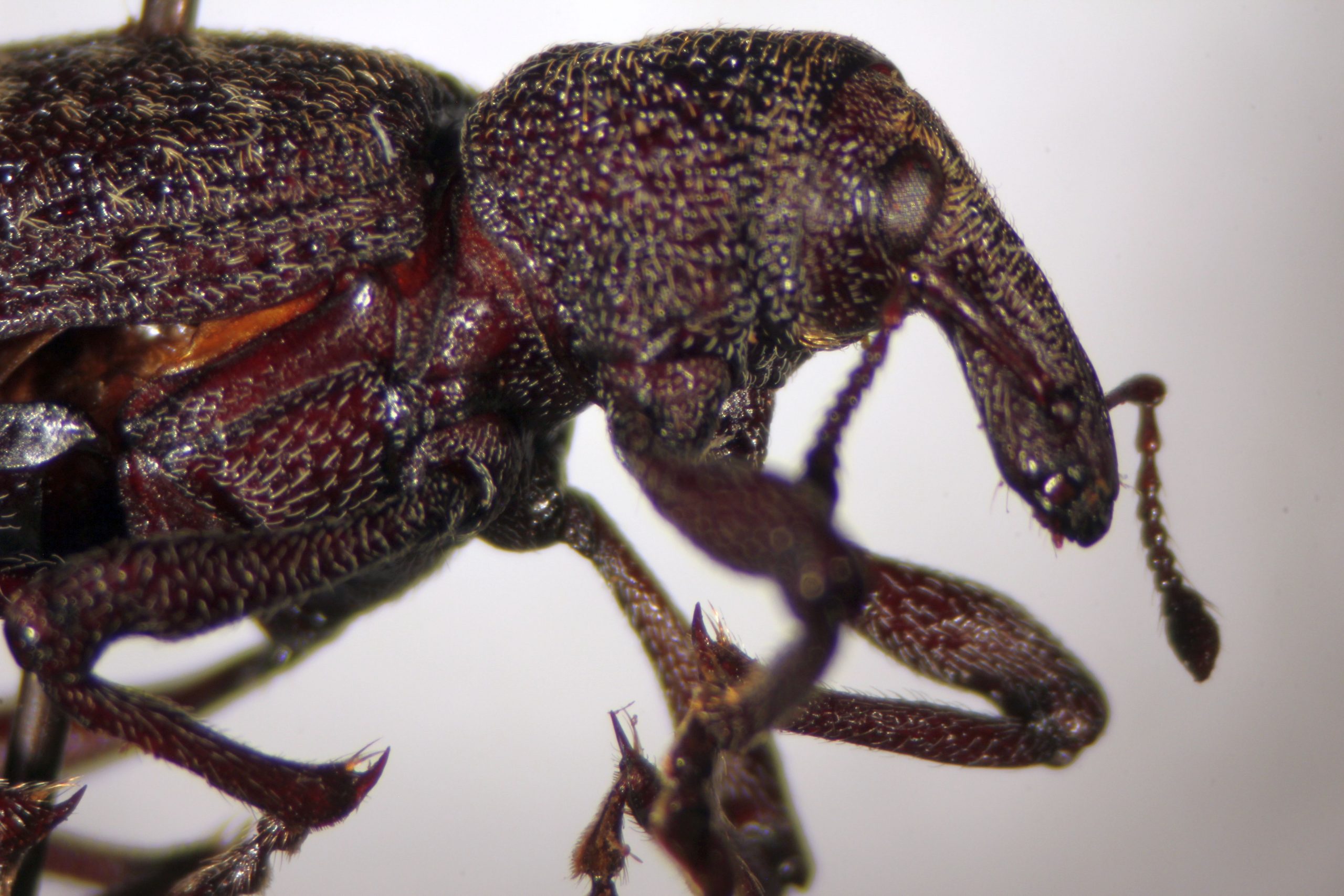
But wait! … there’s more! Molecular work has determined that a group that was formerly known as a separate family, the Scolytidae, should actually be grouped as a subfamily of the Curculionidae. Now called the Scolytinae, this subfamily includes a multitude of bark beetles. These insects feed on tree phloem as larvae, and spend almost their entire lives underneath the bark of a single tree. They usually feed on dead, dying, or weakened trees with low defensive capabilities. Some species, e.g. mountain pine beetle, Dendroctonus ponderosae, can mass attack healthy live trees and kill them. Many are associated with symbiotic fungi, and carry spores in specialized structures called mycangia. The fungi can help to kill the host trees by blocking the xylem elements, and the larval and adult beetles may also feed on the fungus (e.g. ambrosia beetles).
Confusingly, while they are grouped as a subfamily of Curculionidae, Scolytinae lack a prolonged snout, although they do have a broad “muzzle” and elbowed antennae. Scolytinae are small, and have a characteristic elongate, cylindrical body shape, which can help you to identify these beetles. The pronotum often almost hides the head.
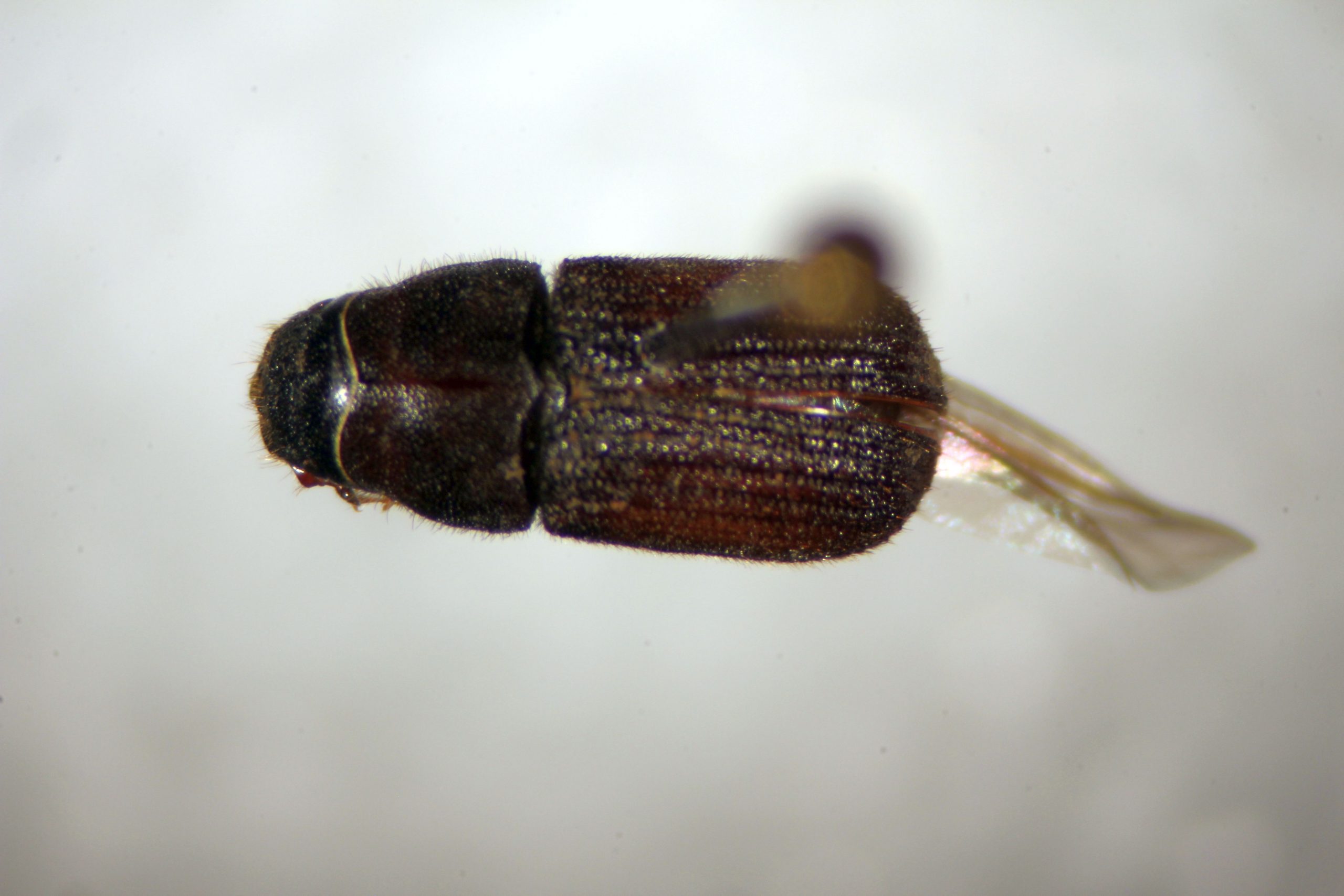
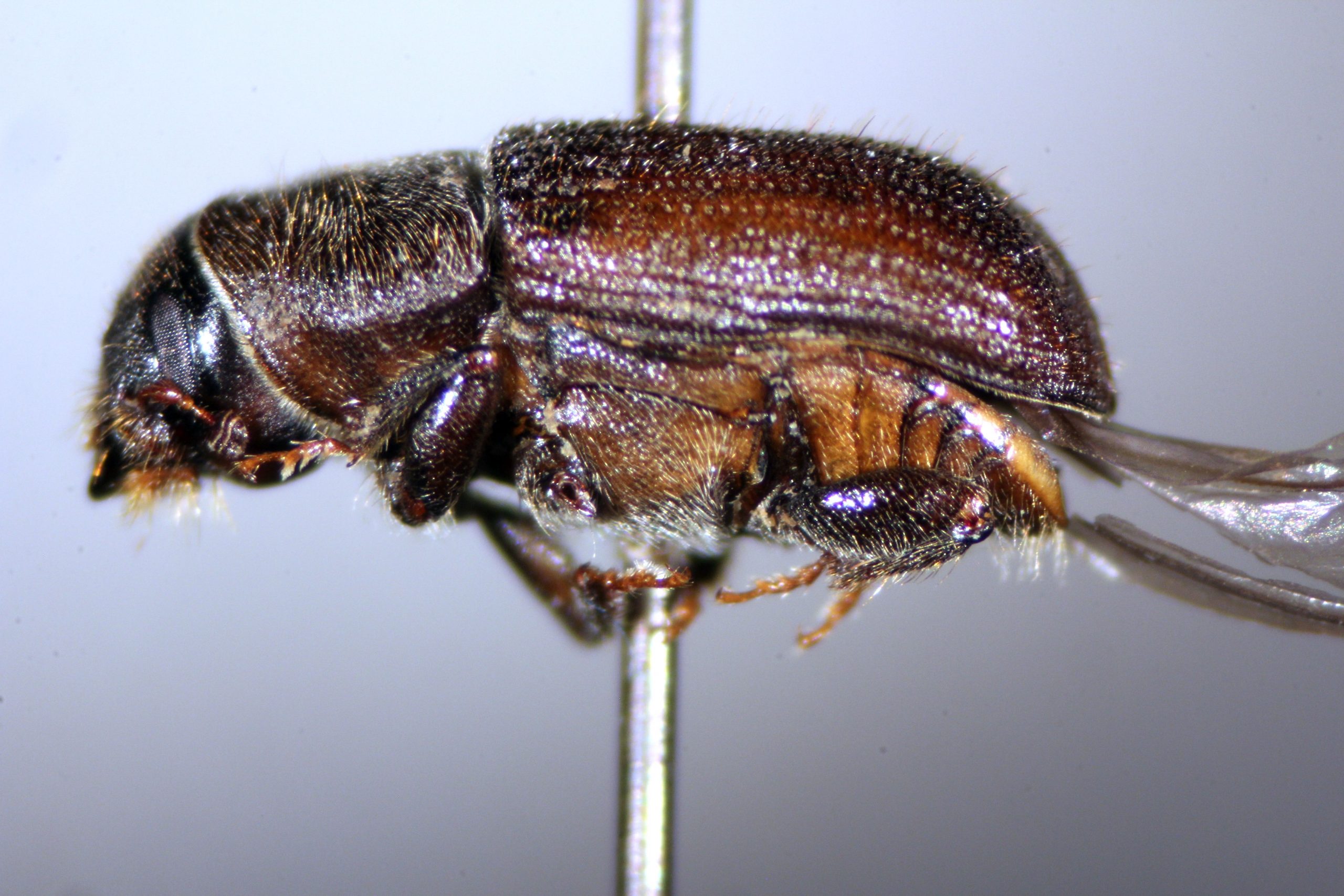
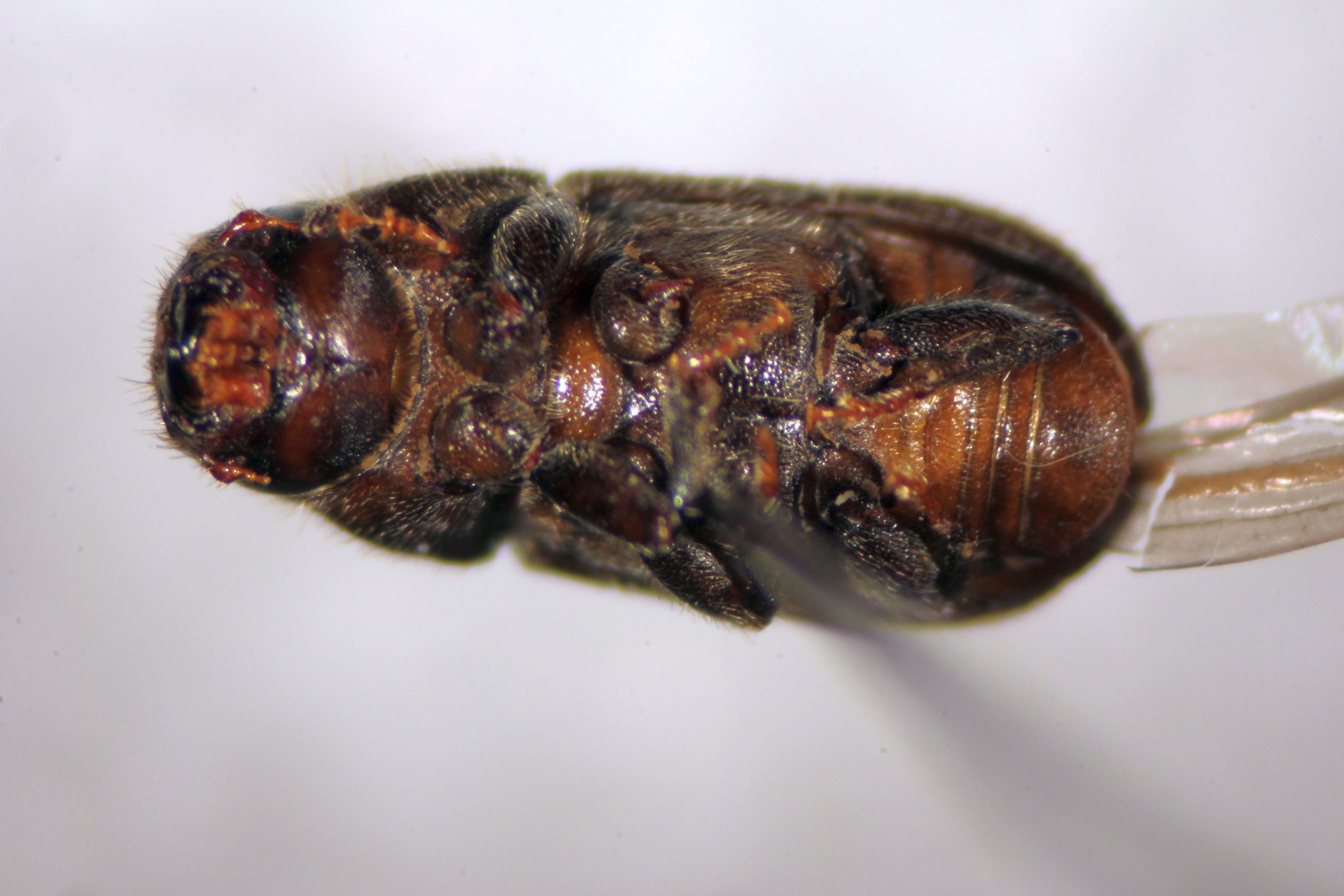
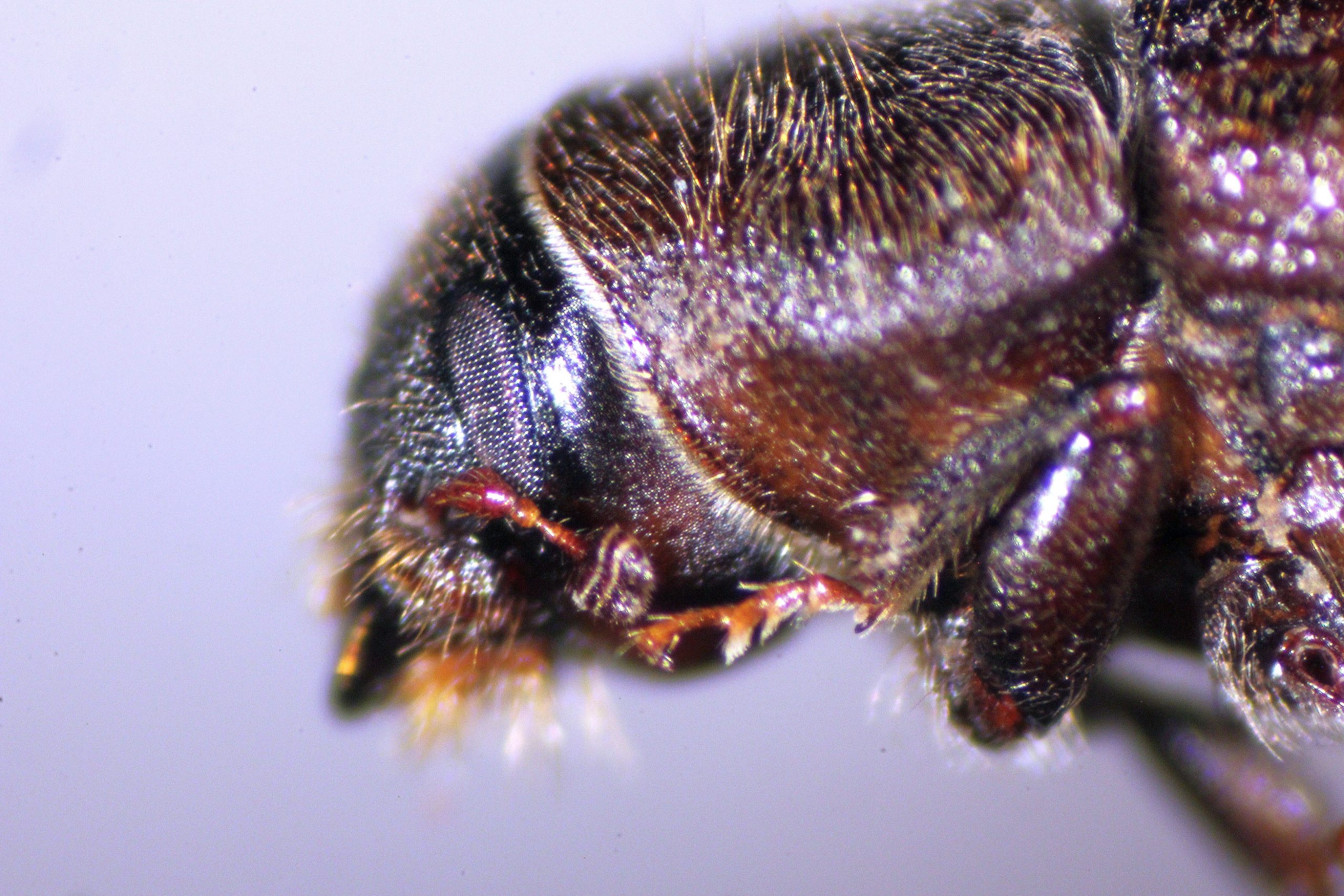


Feedback/Errata